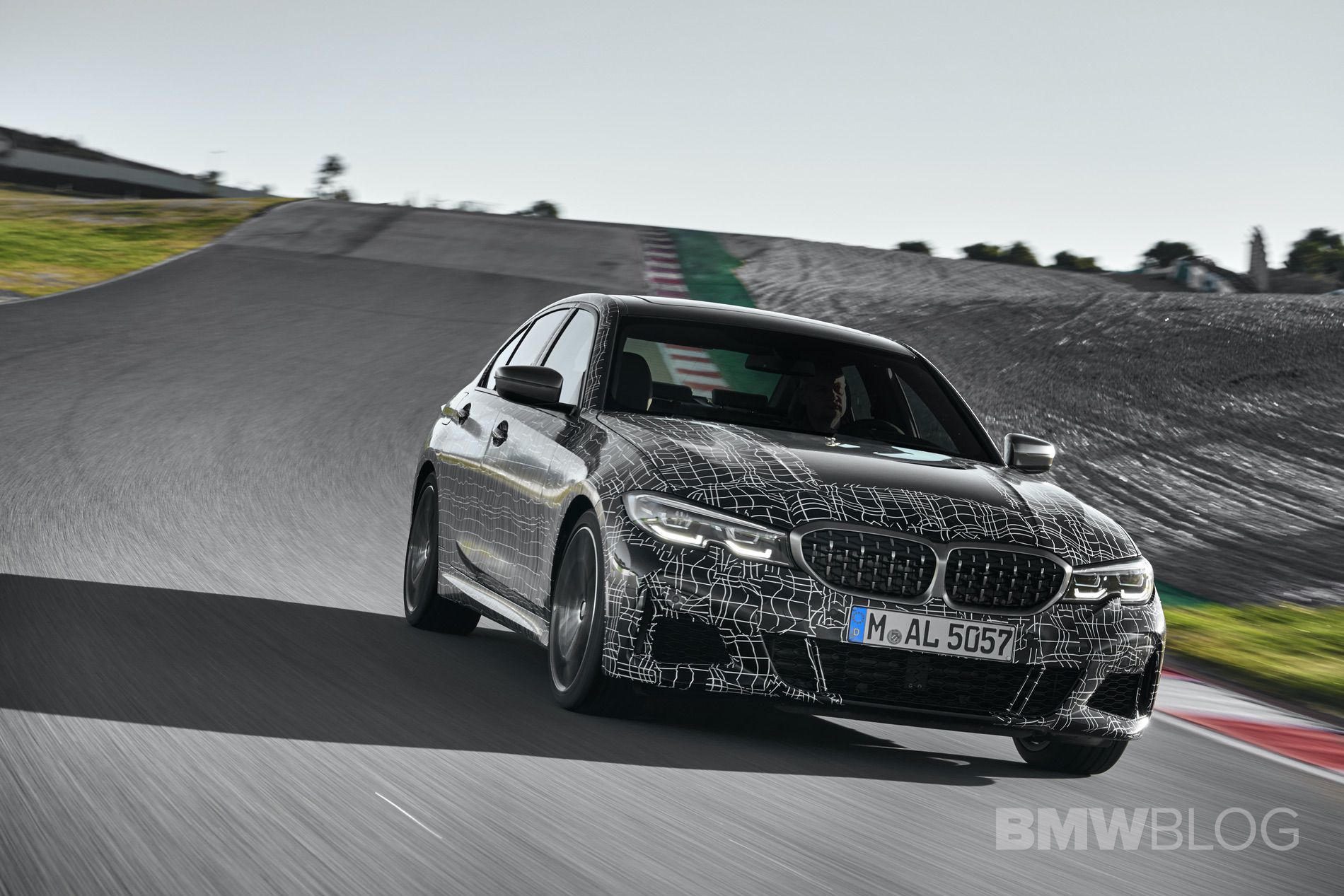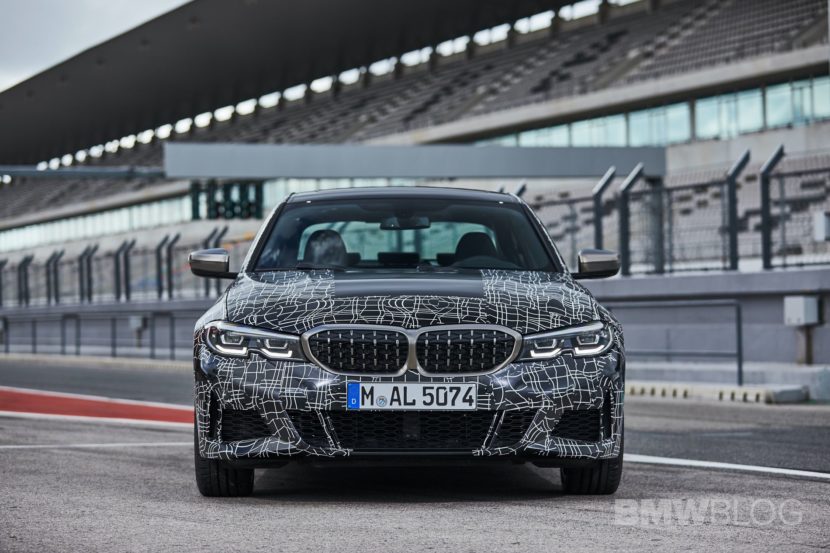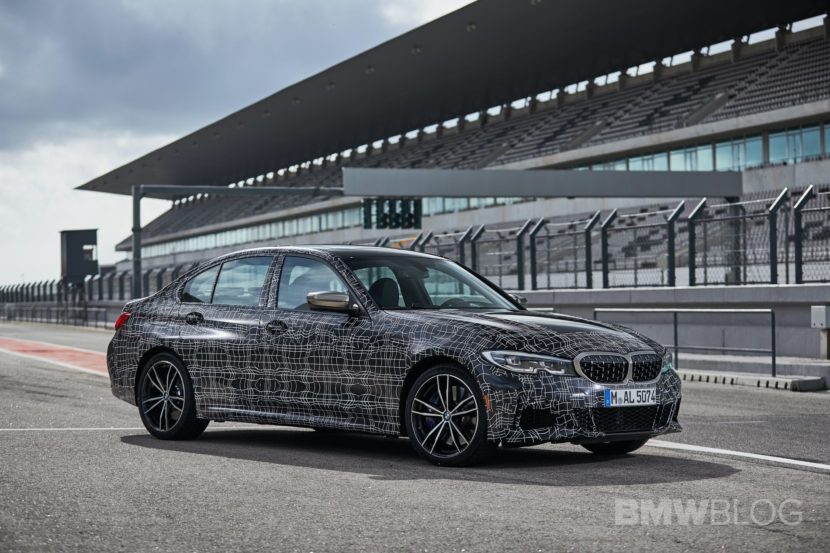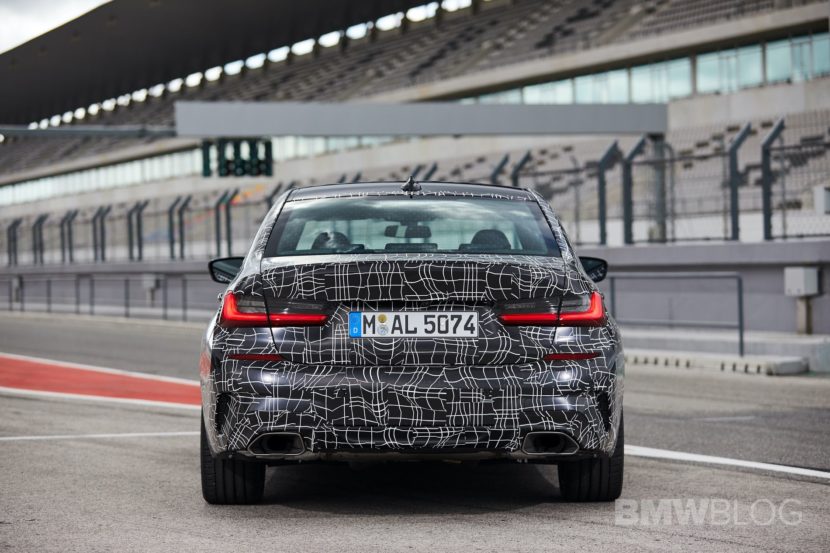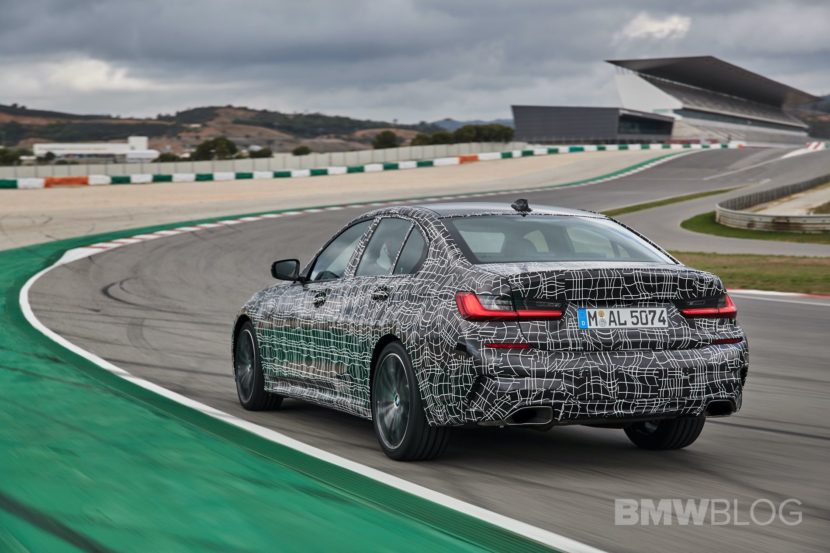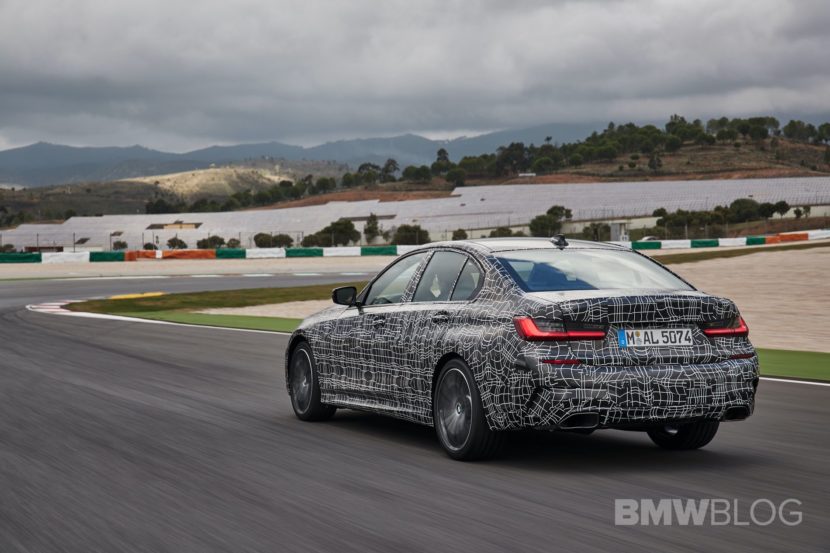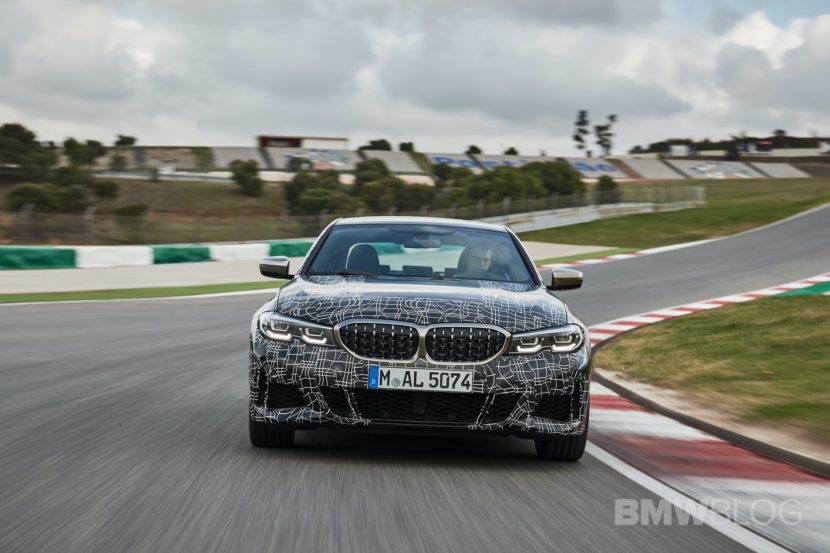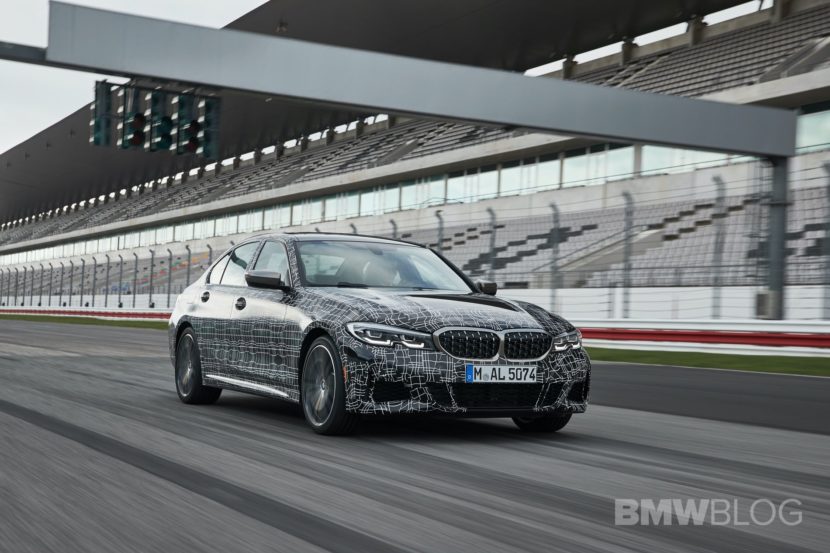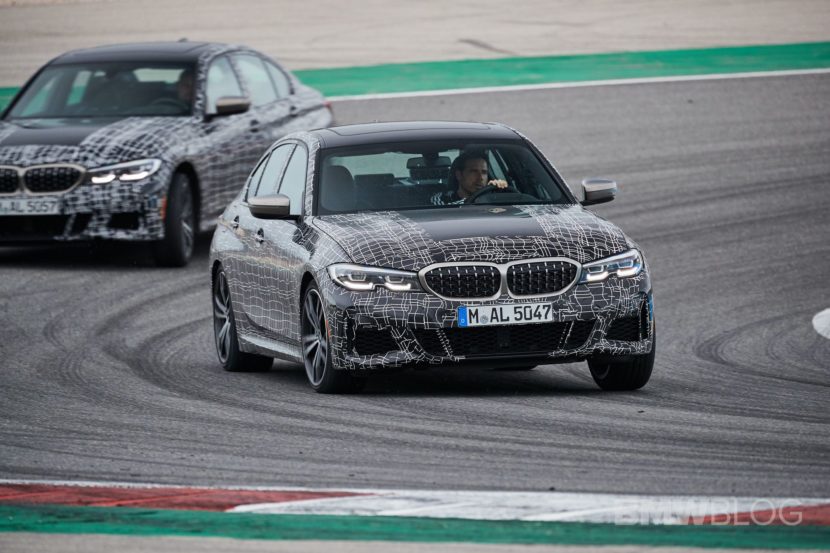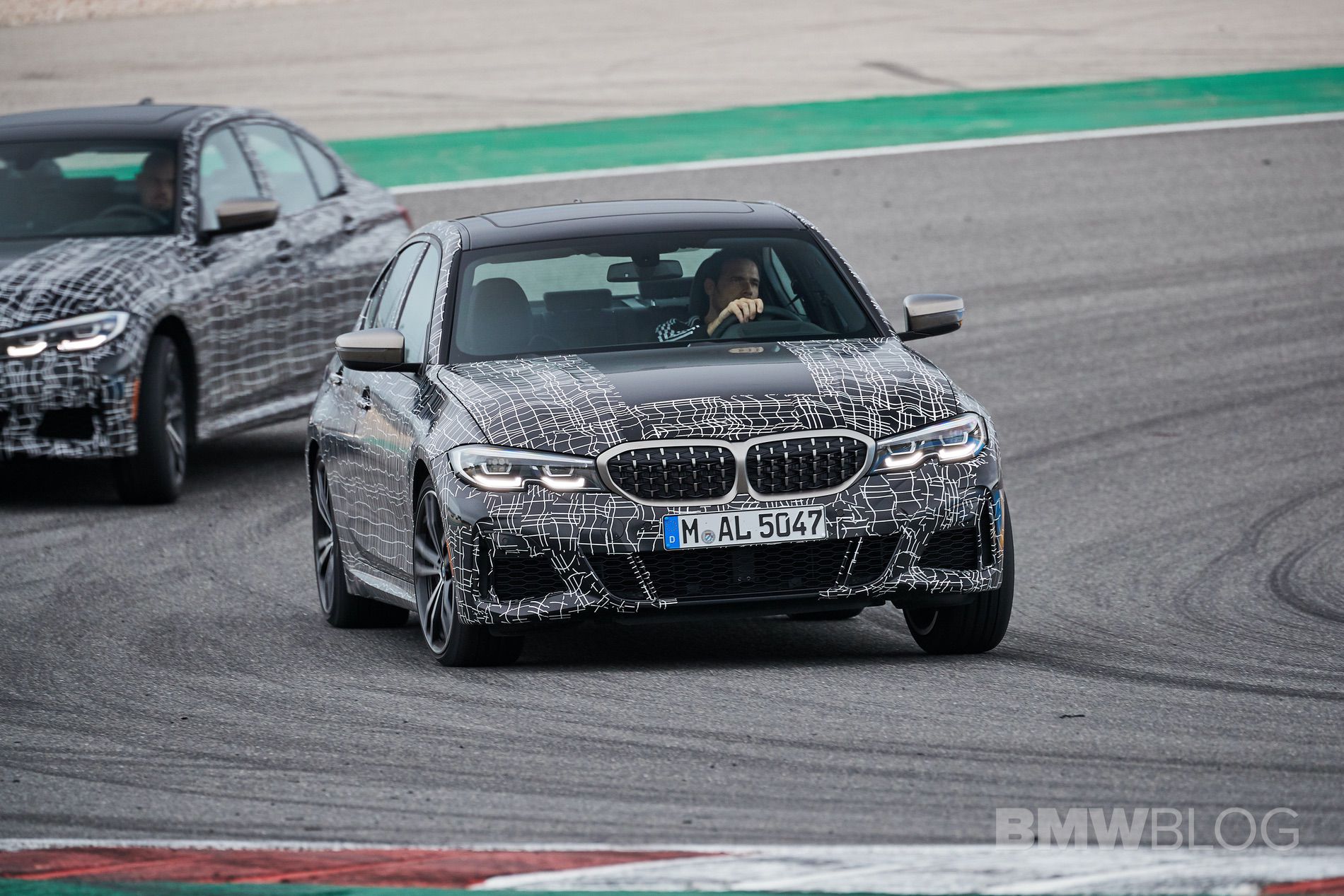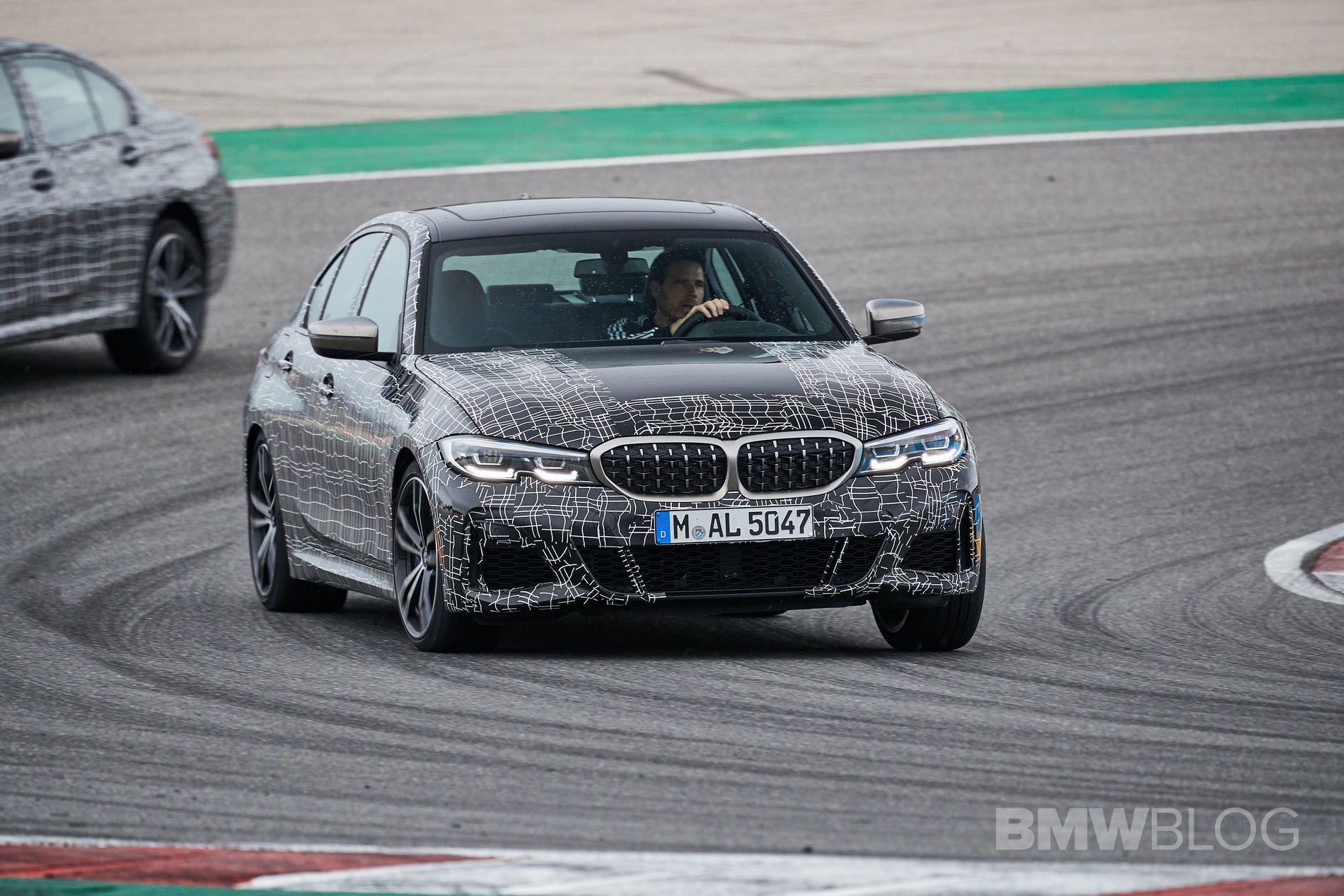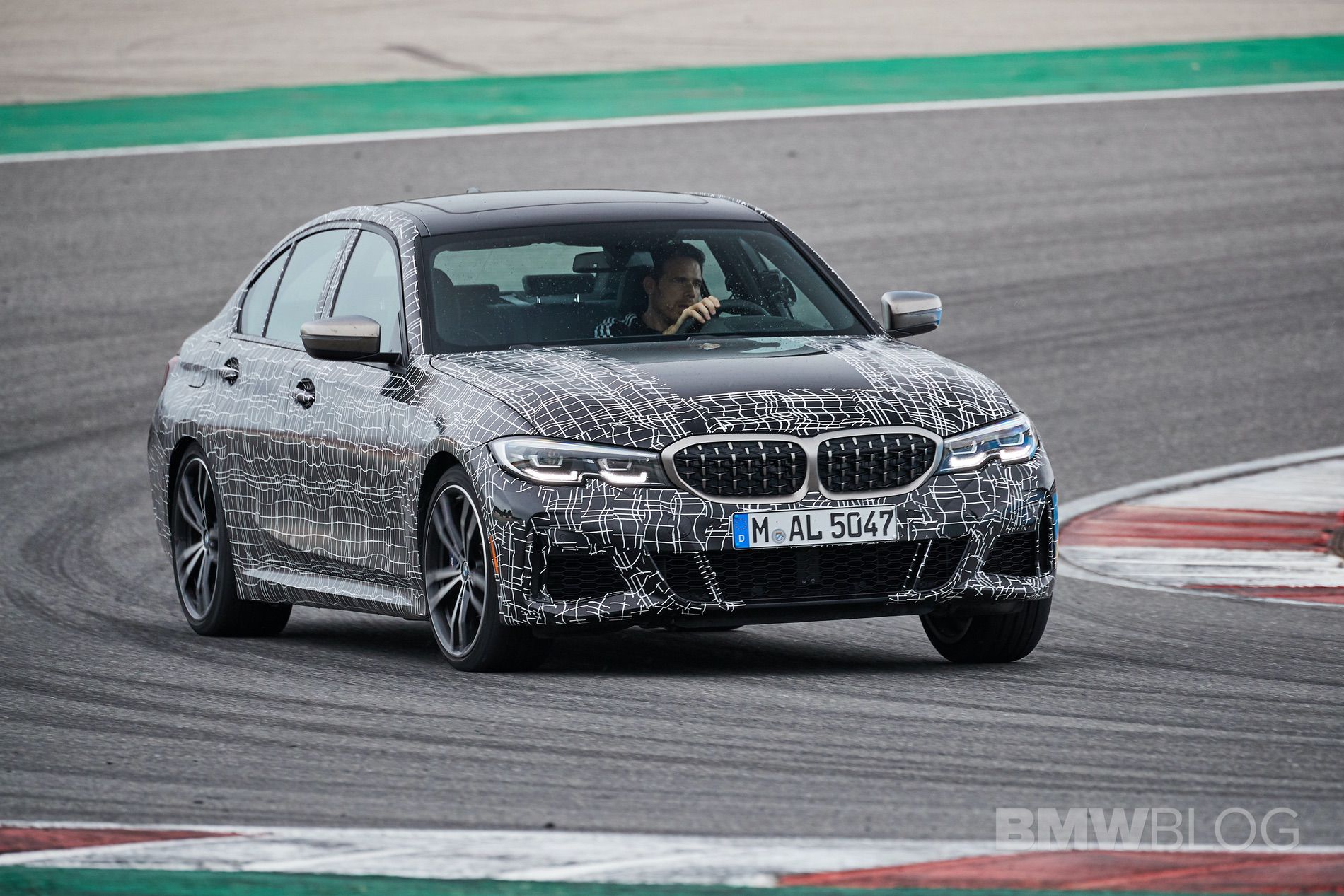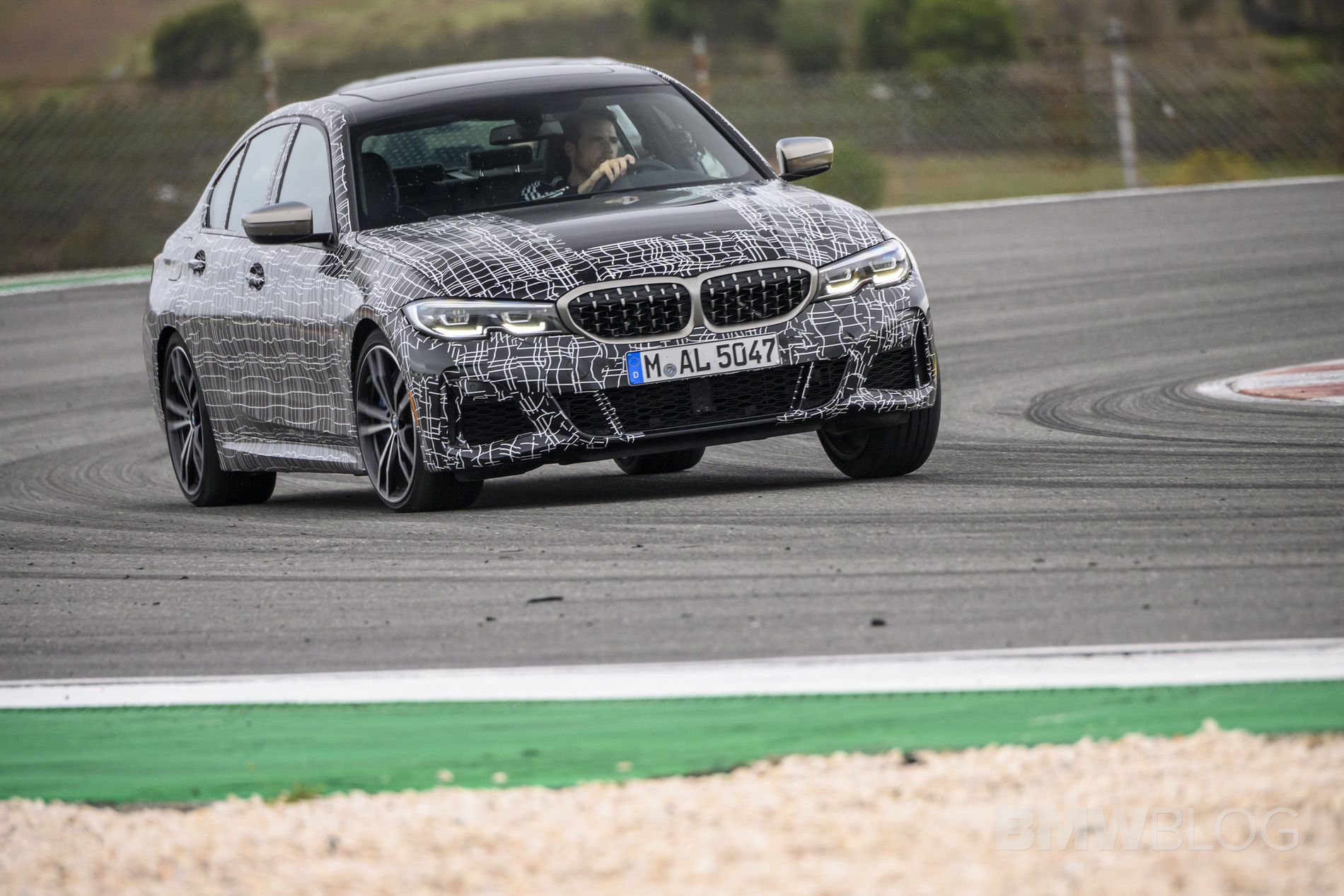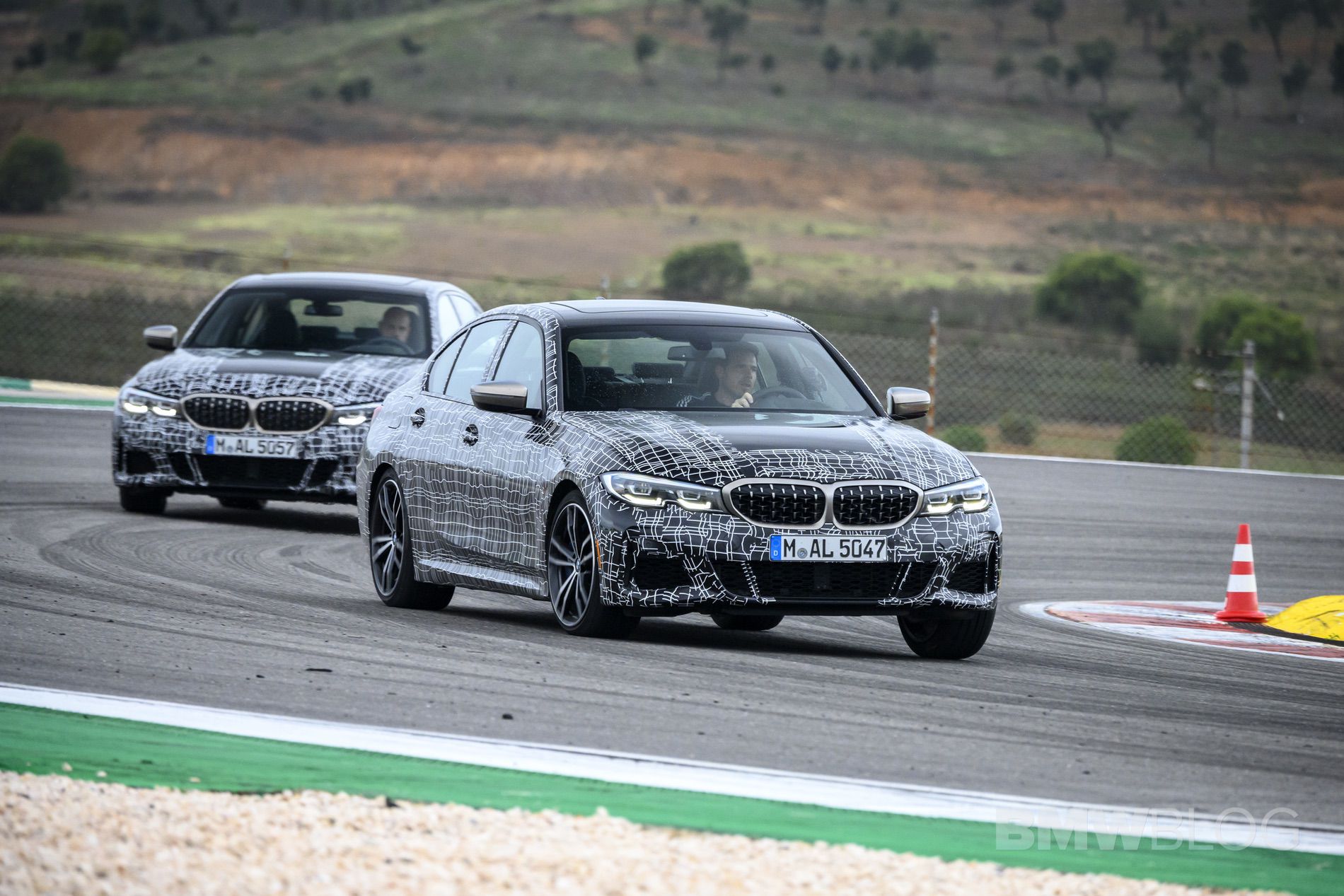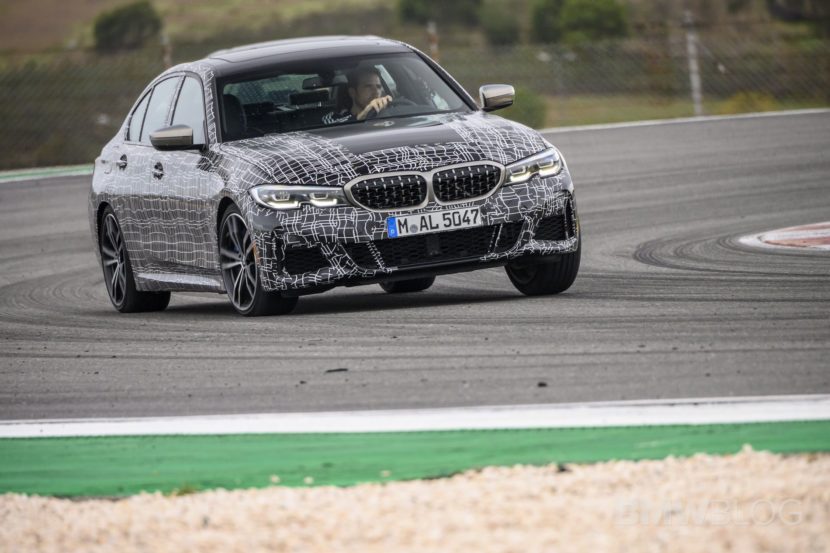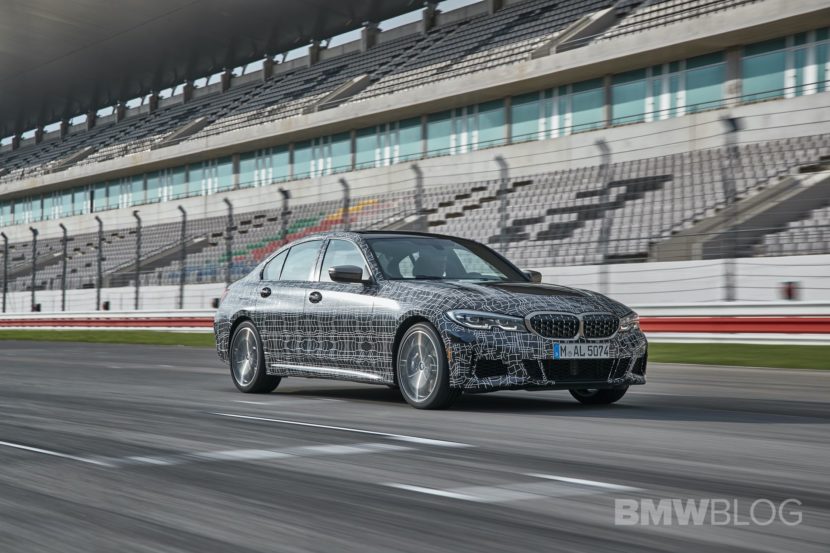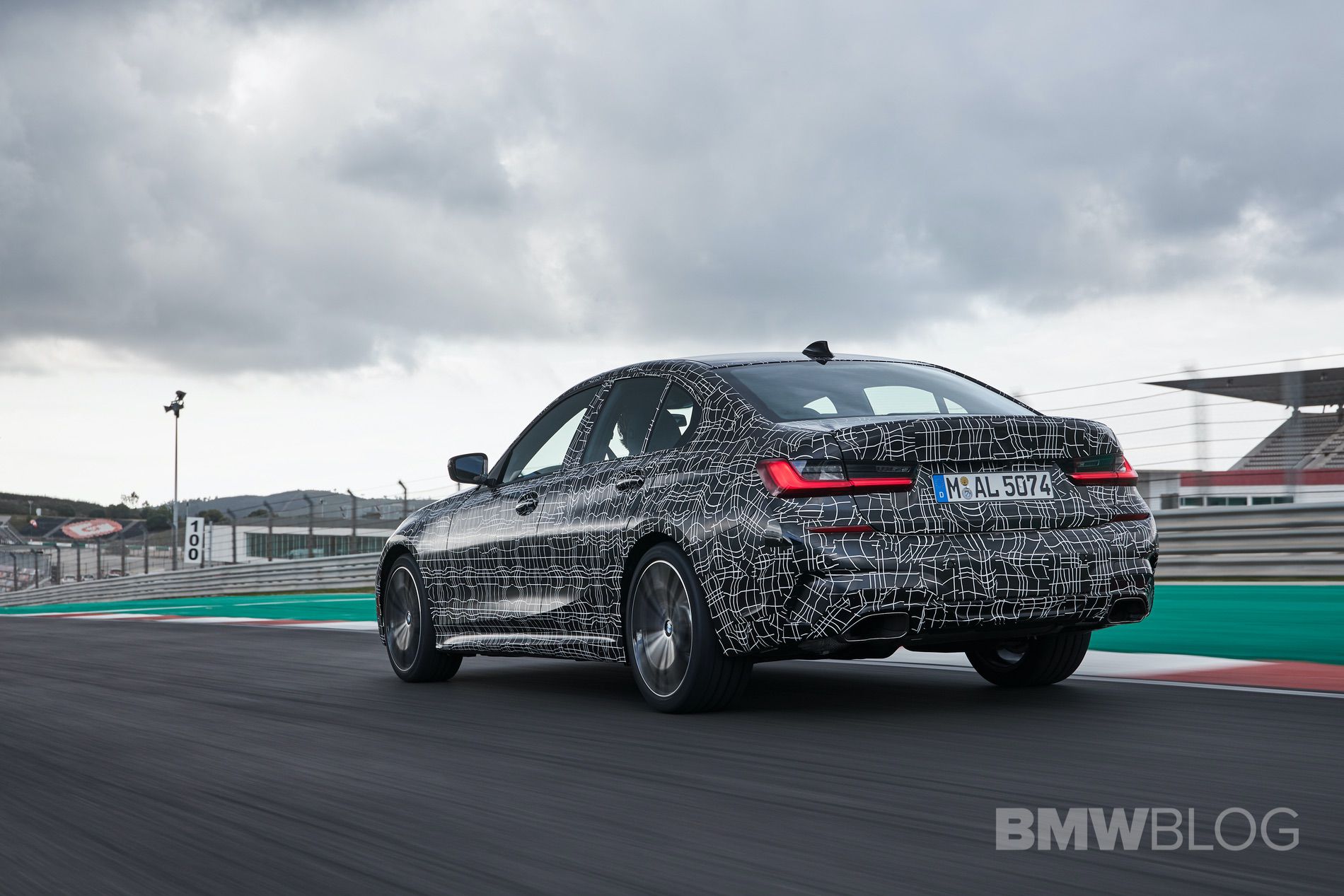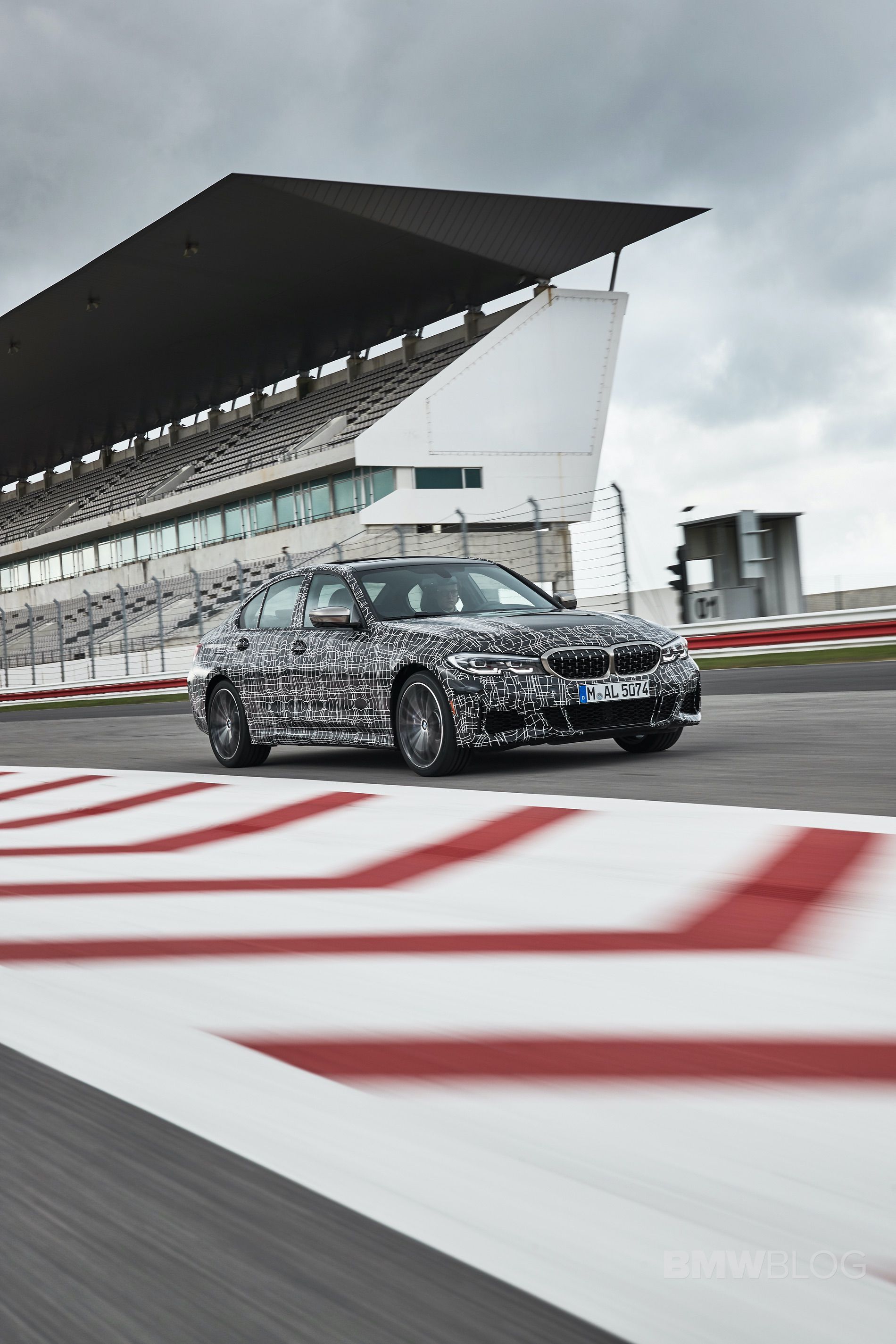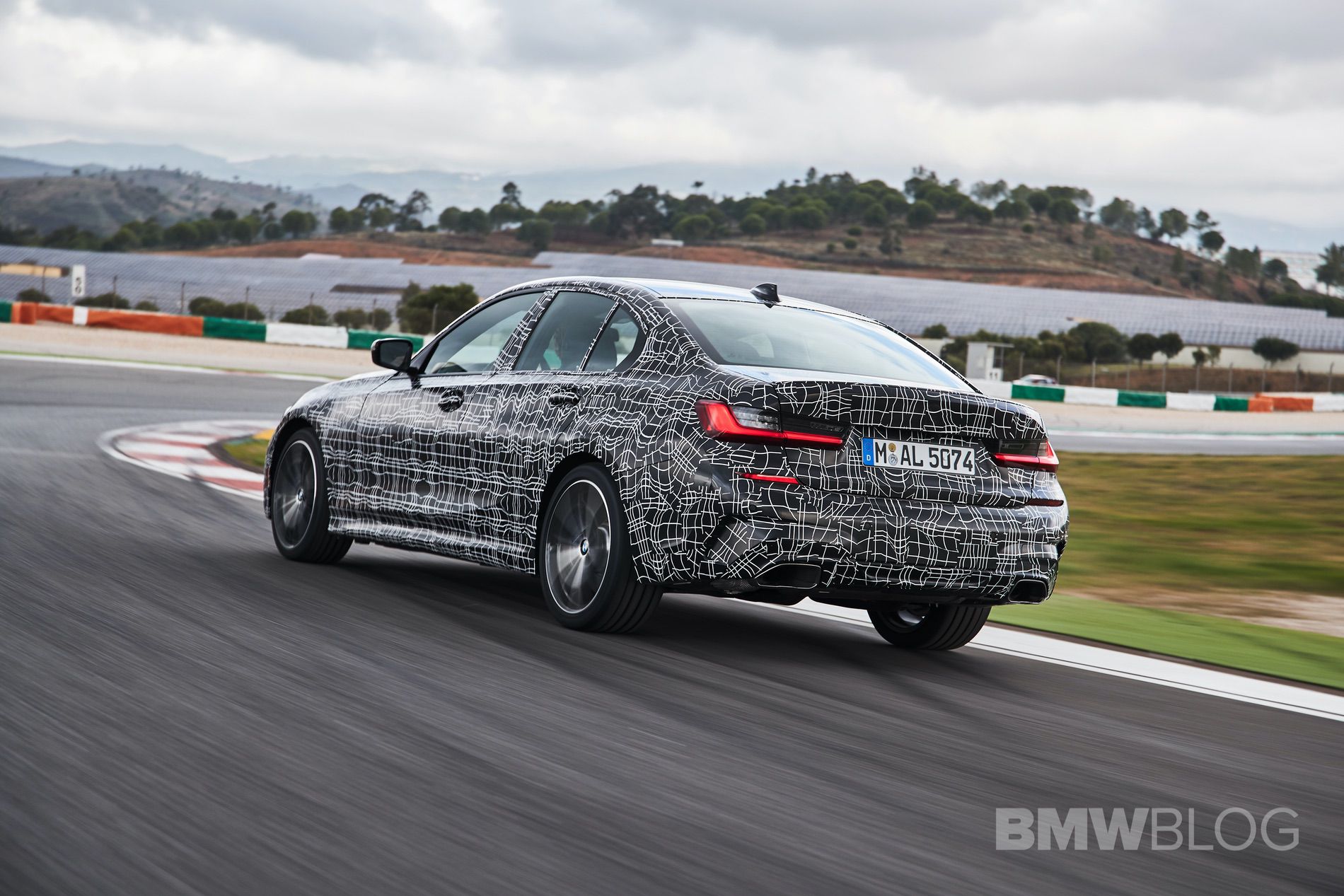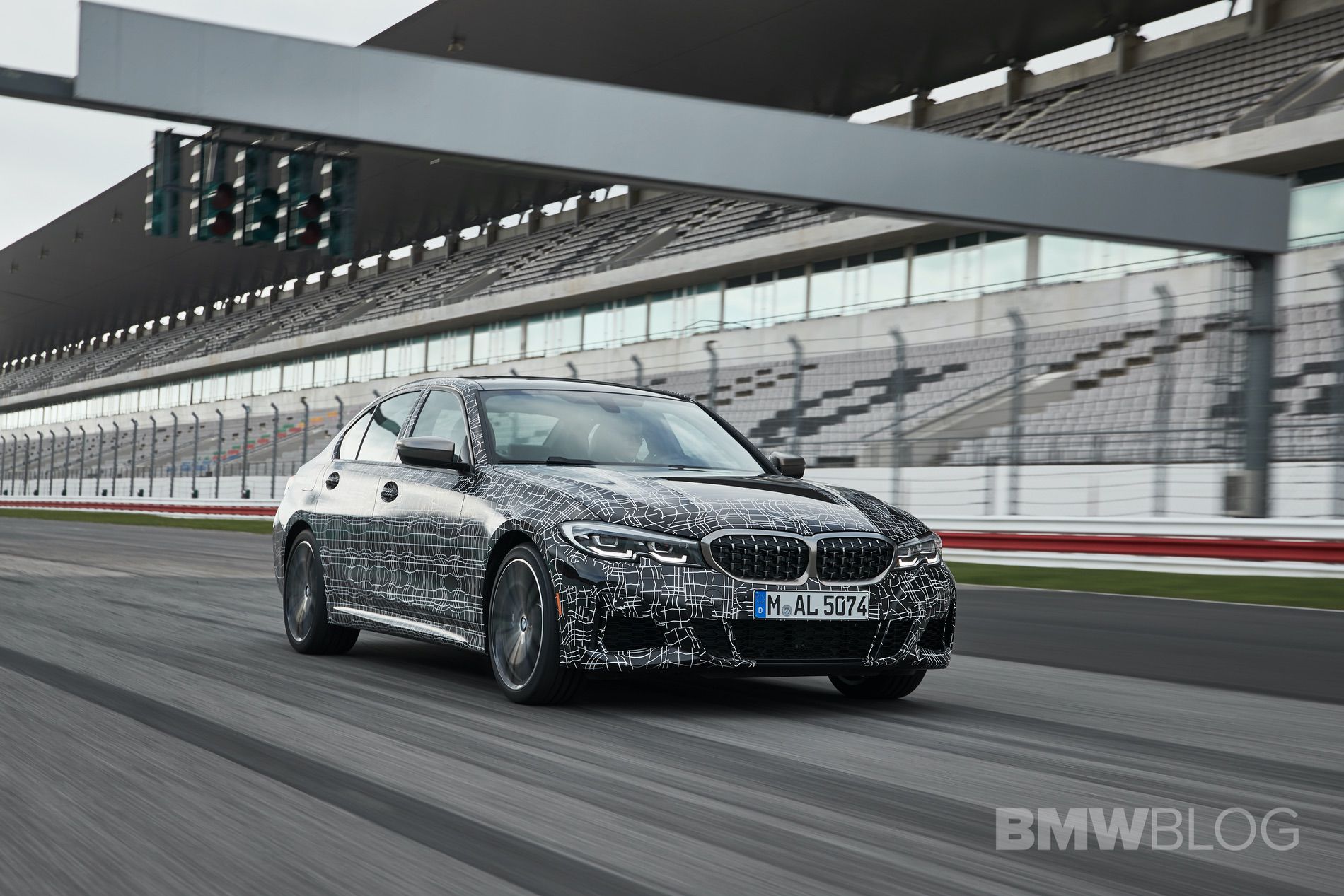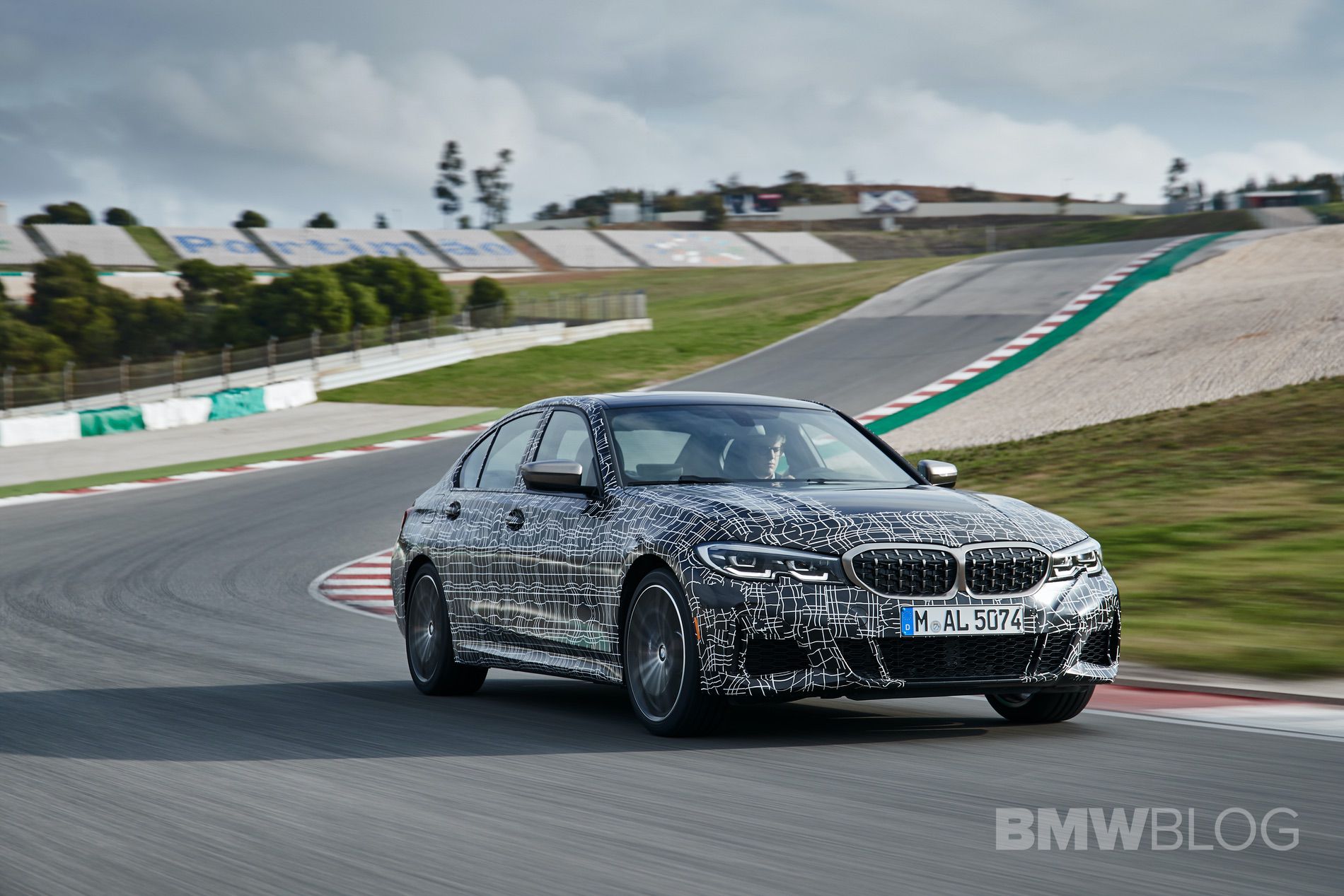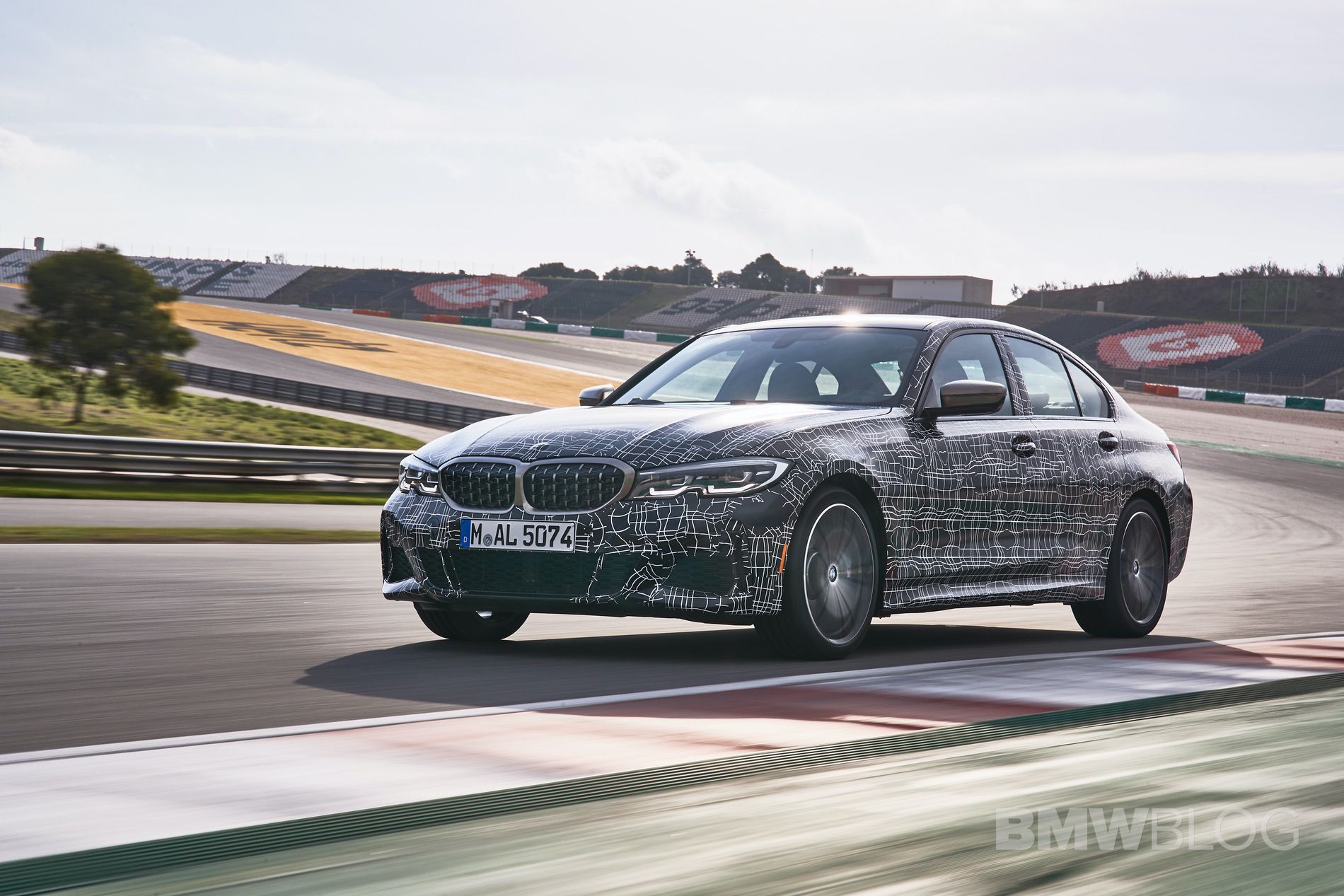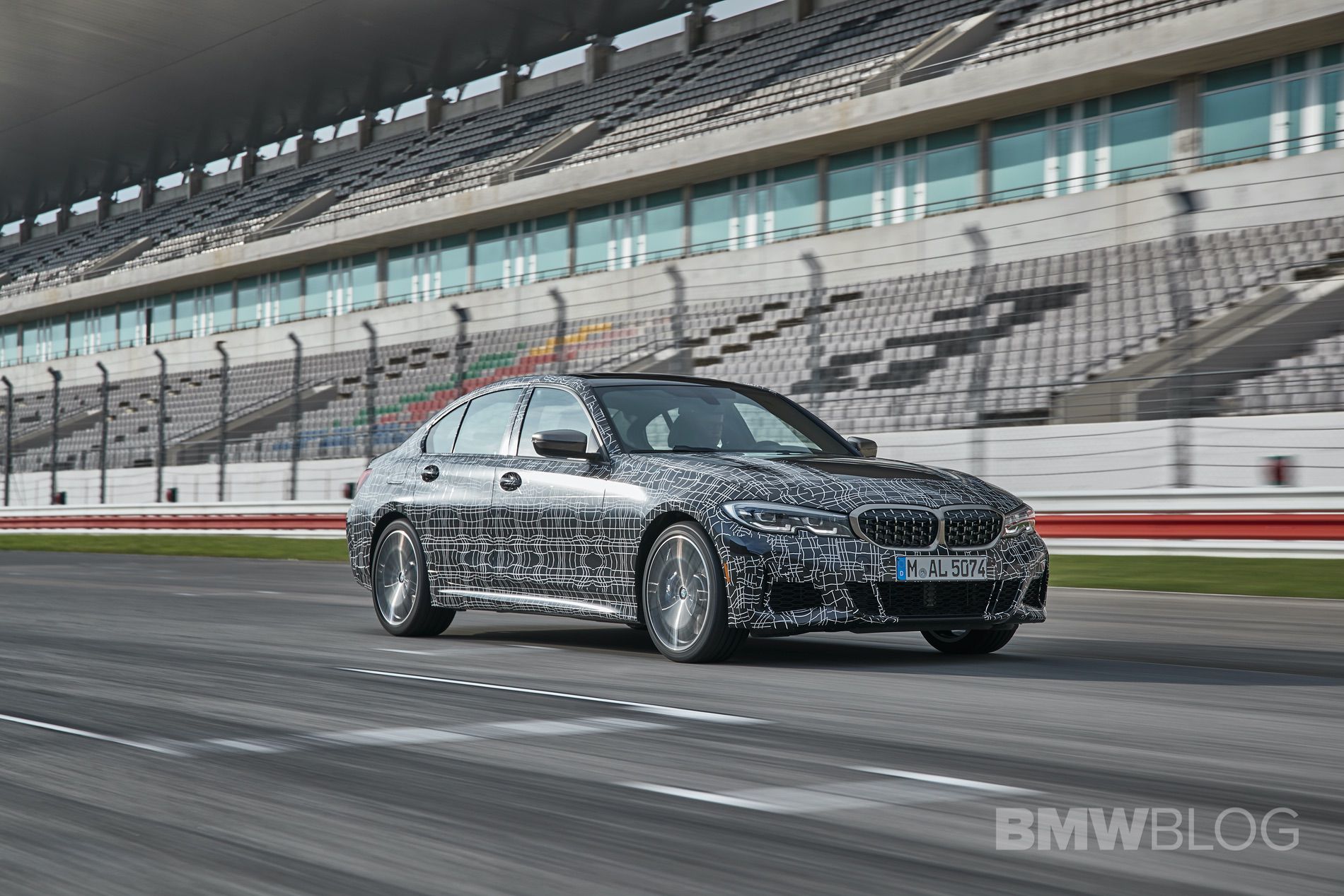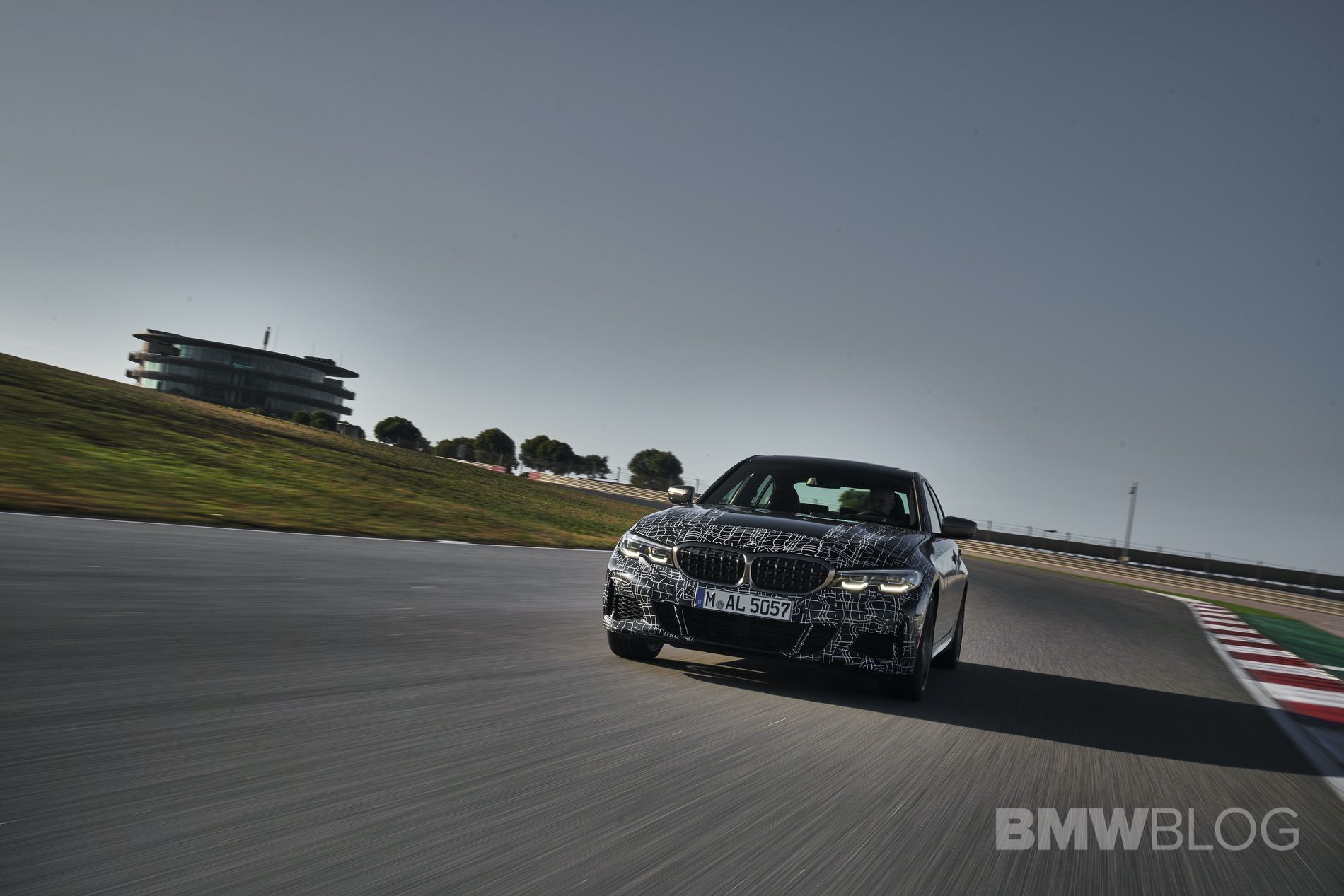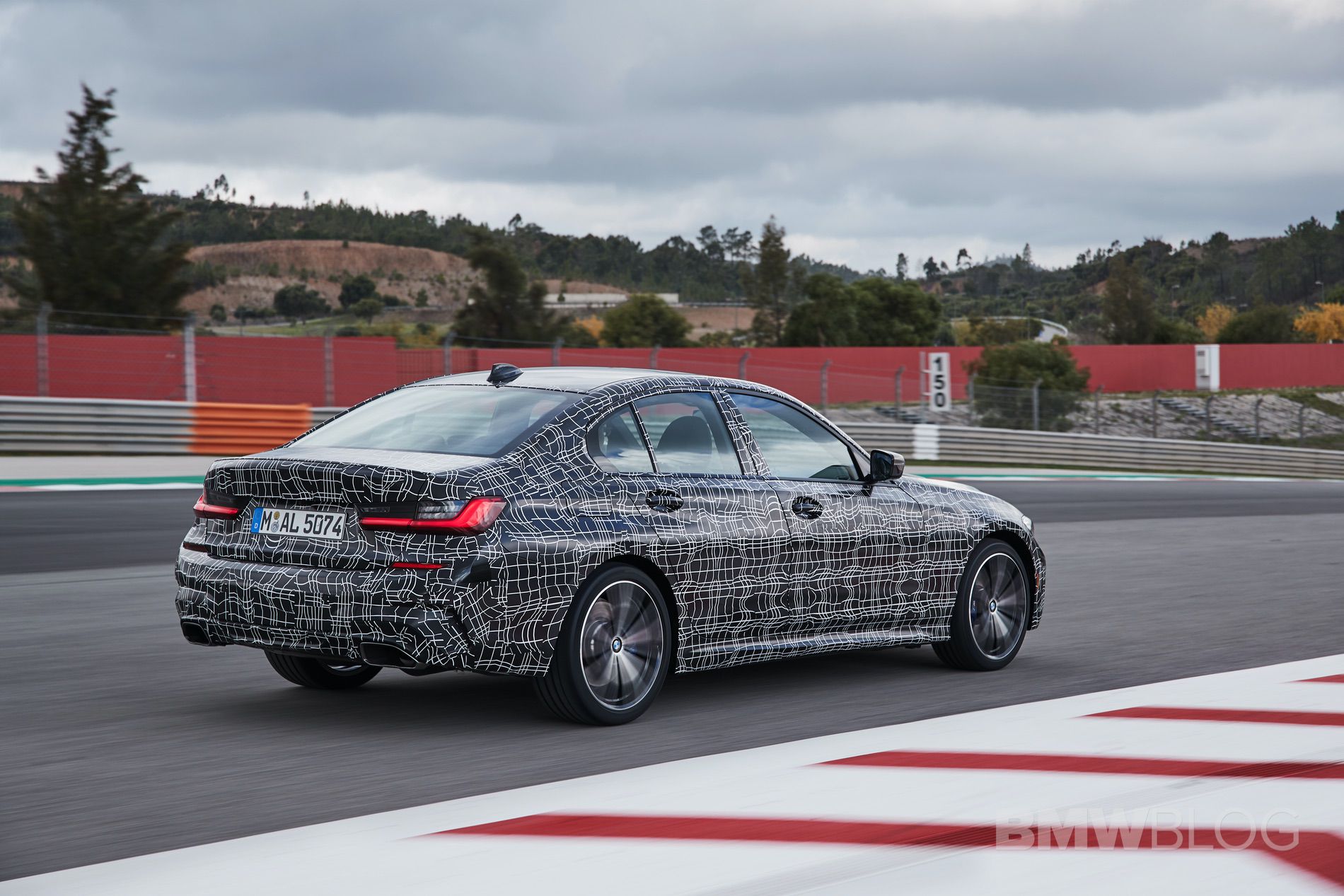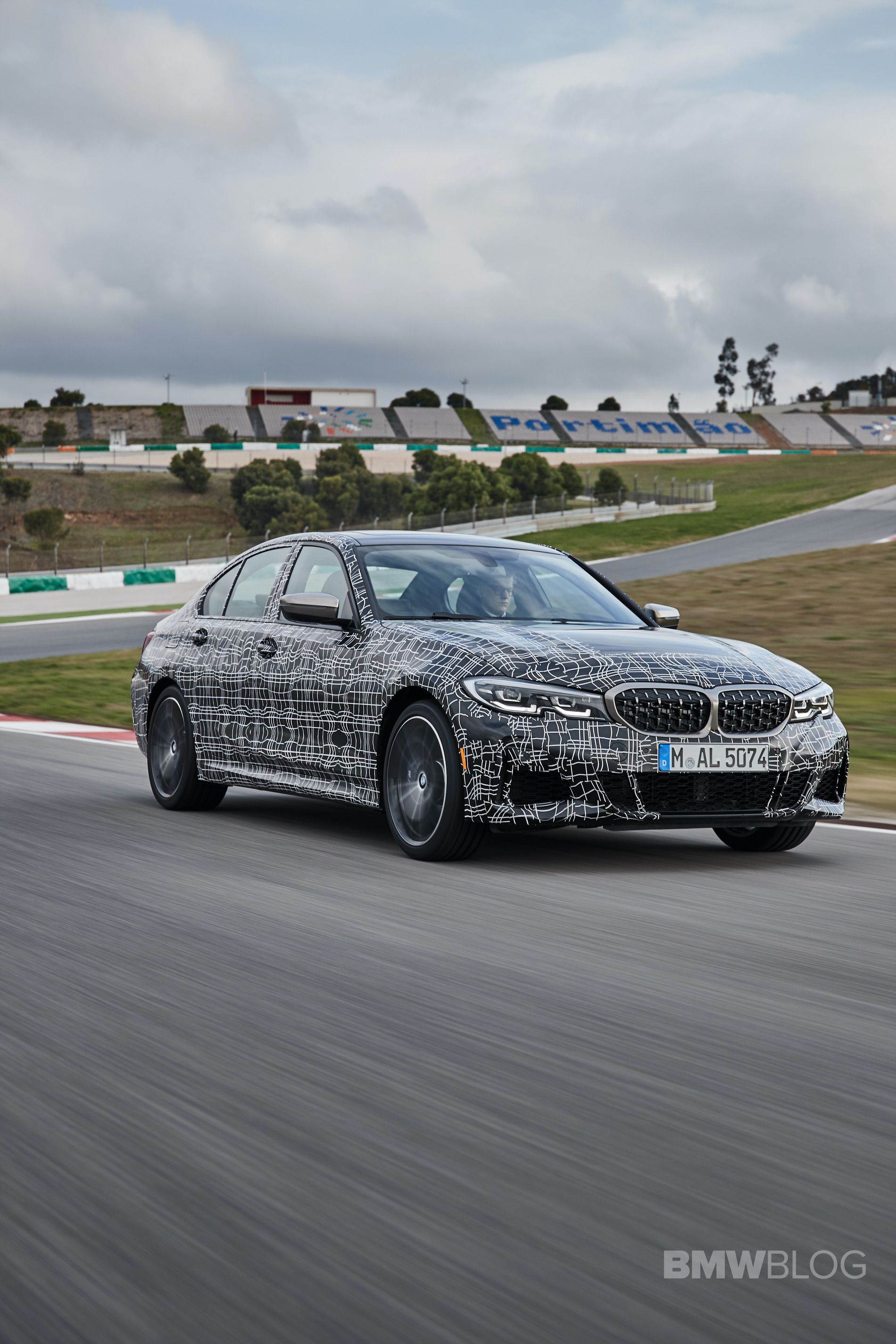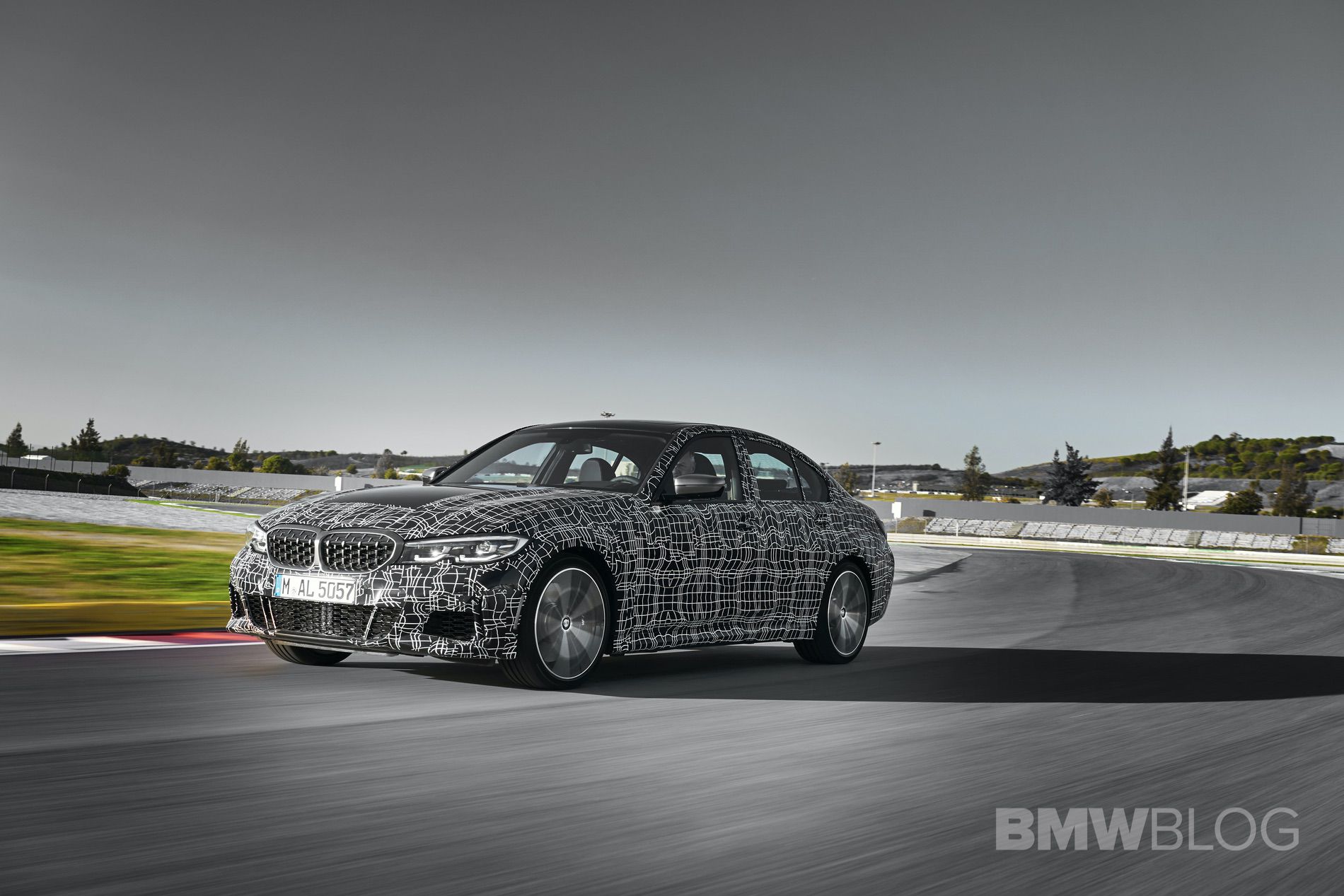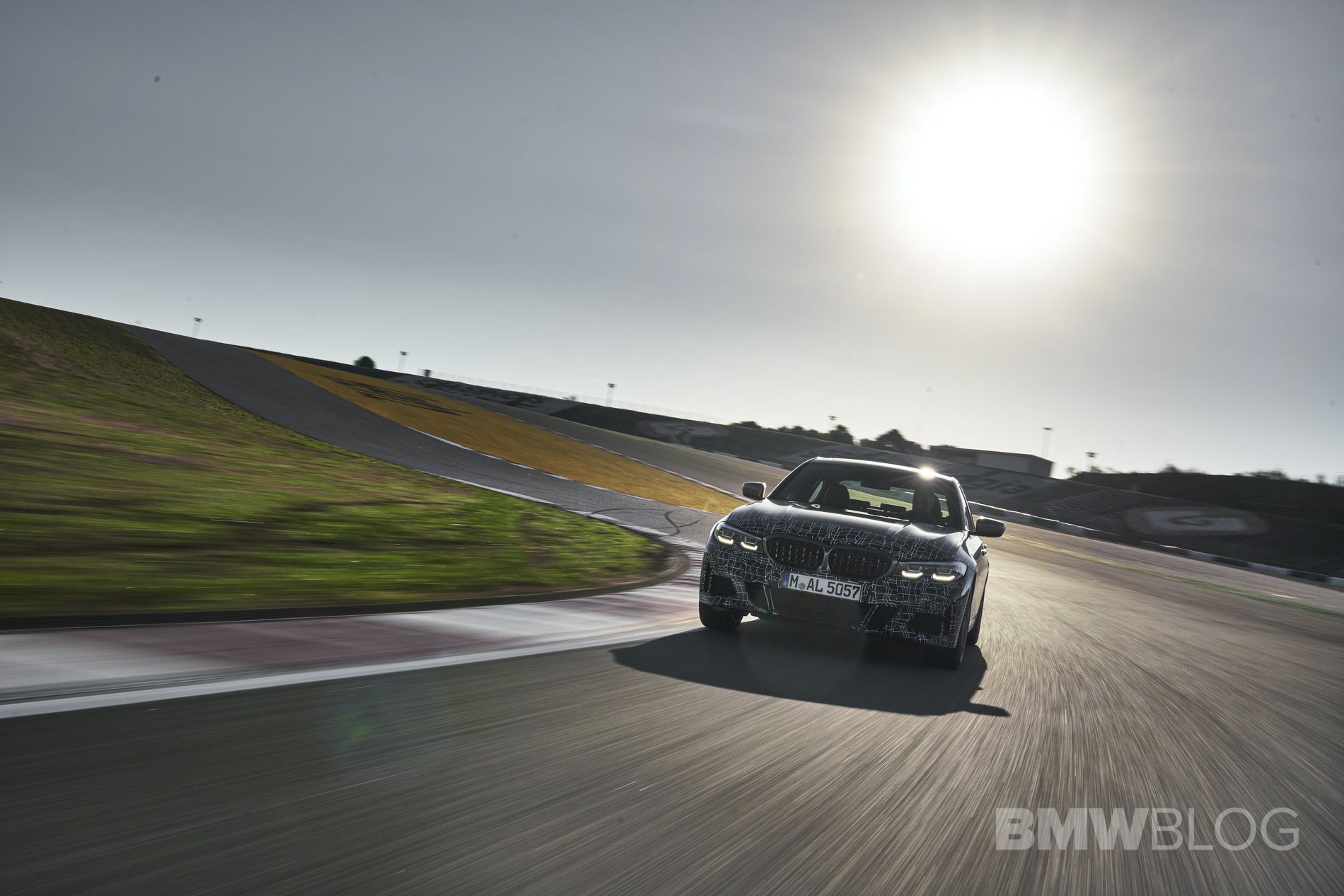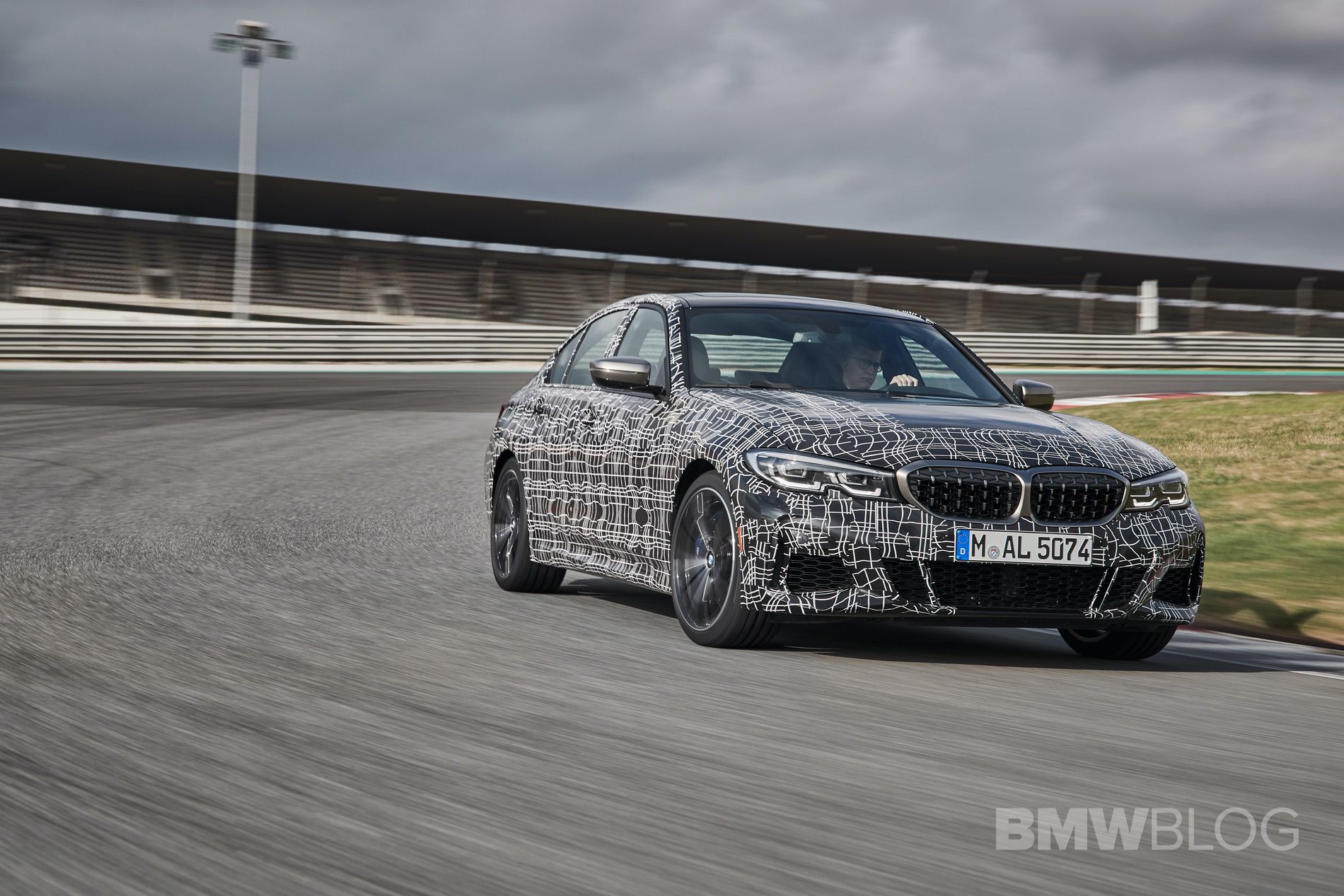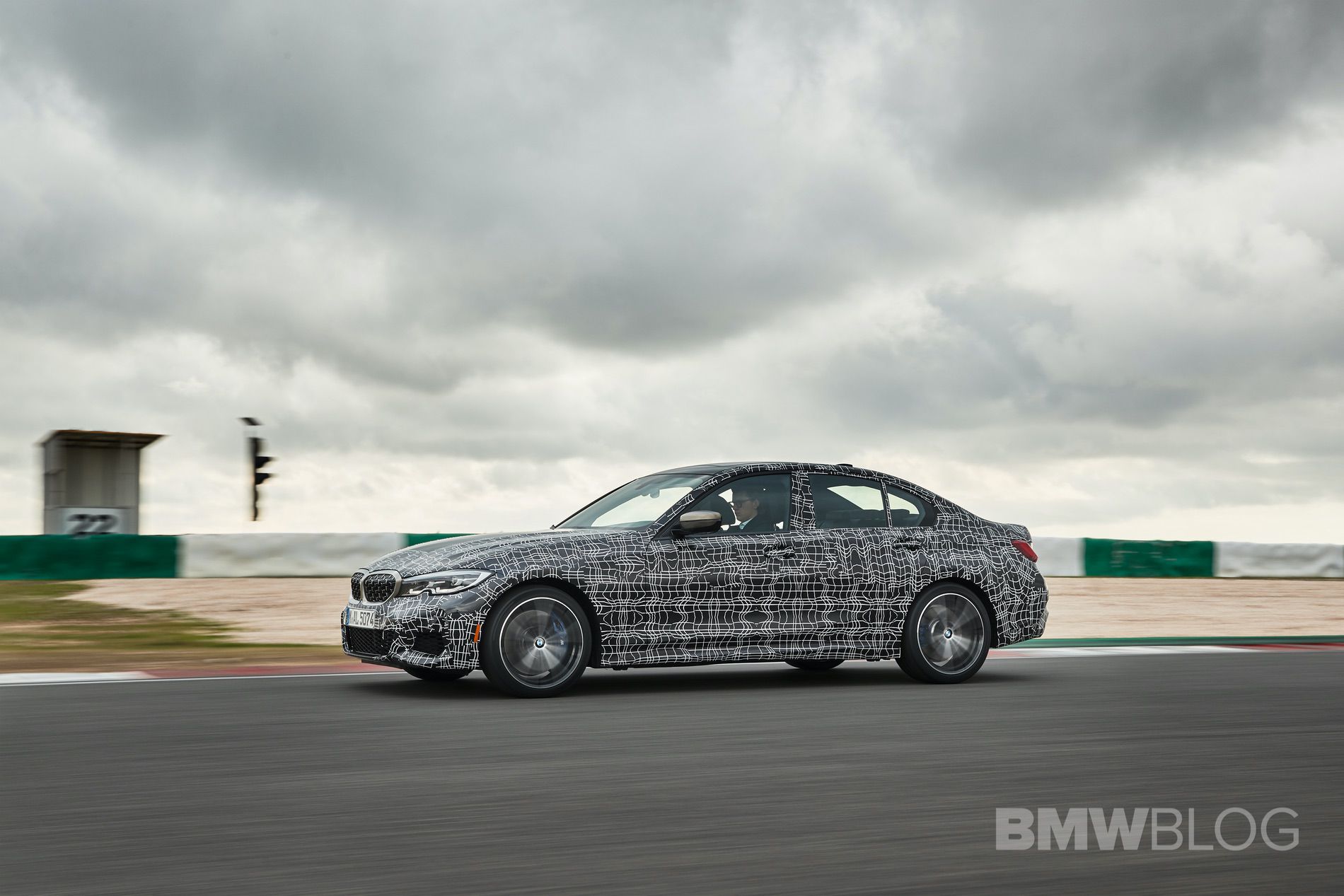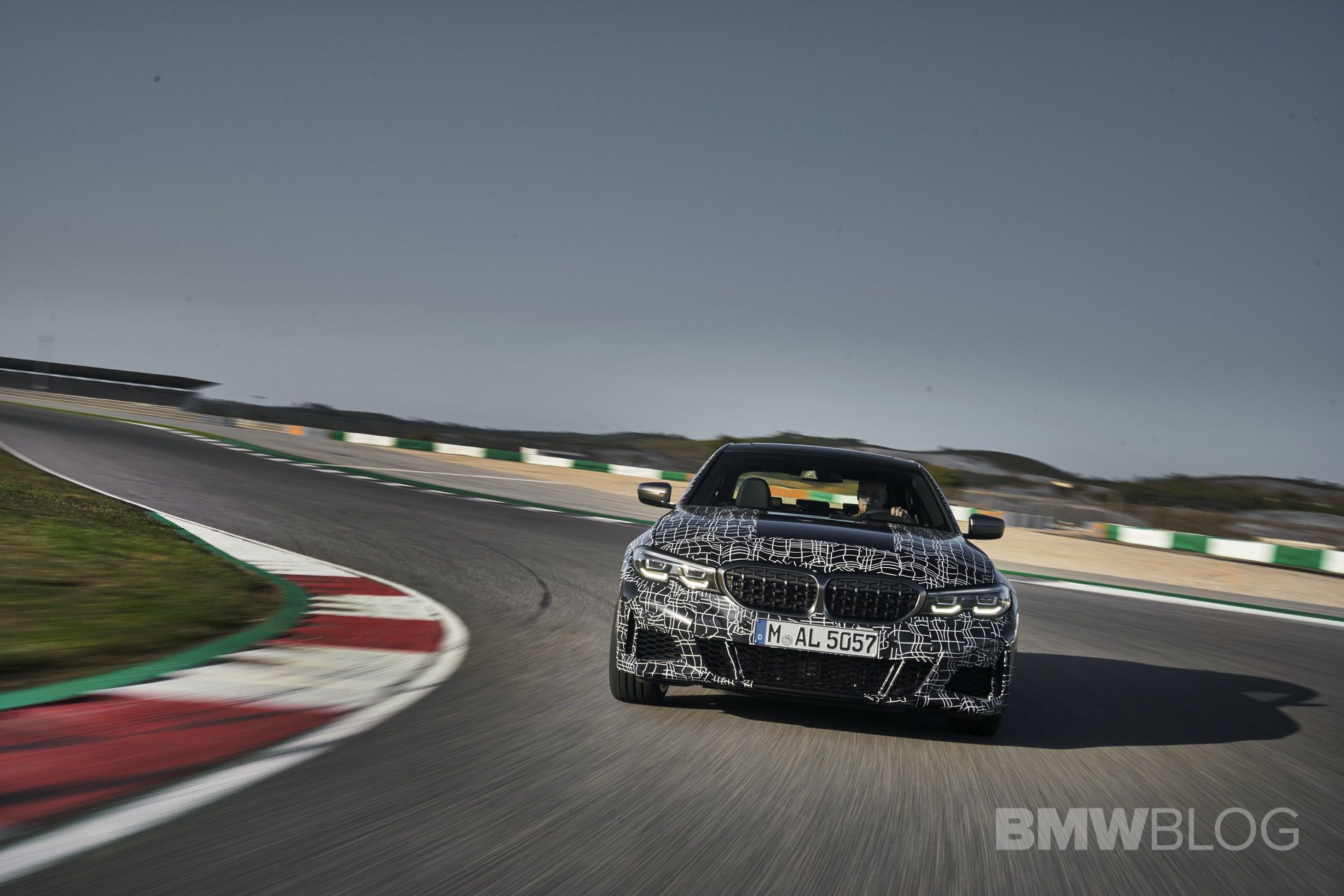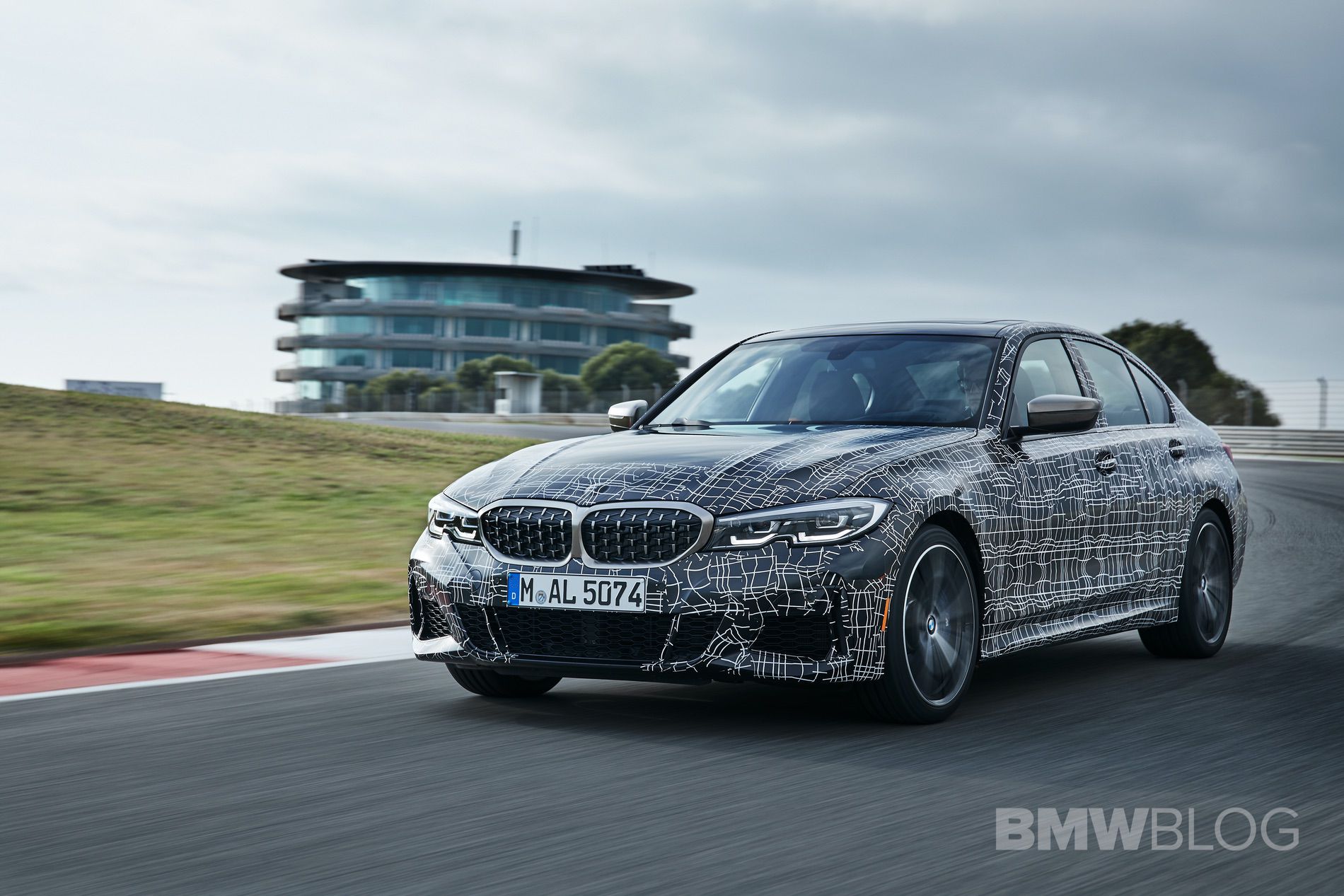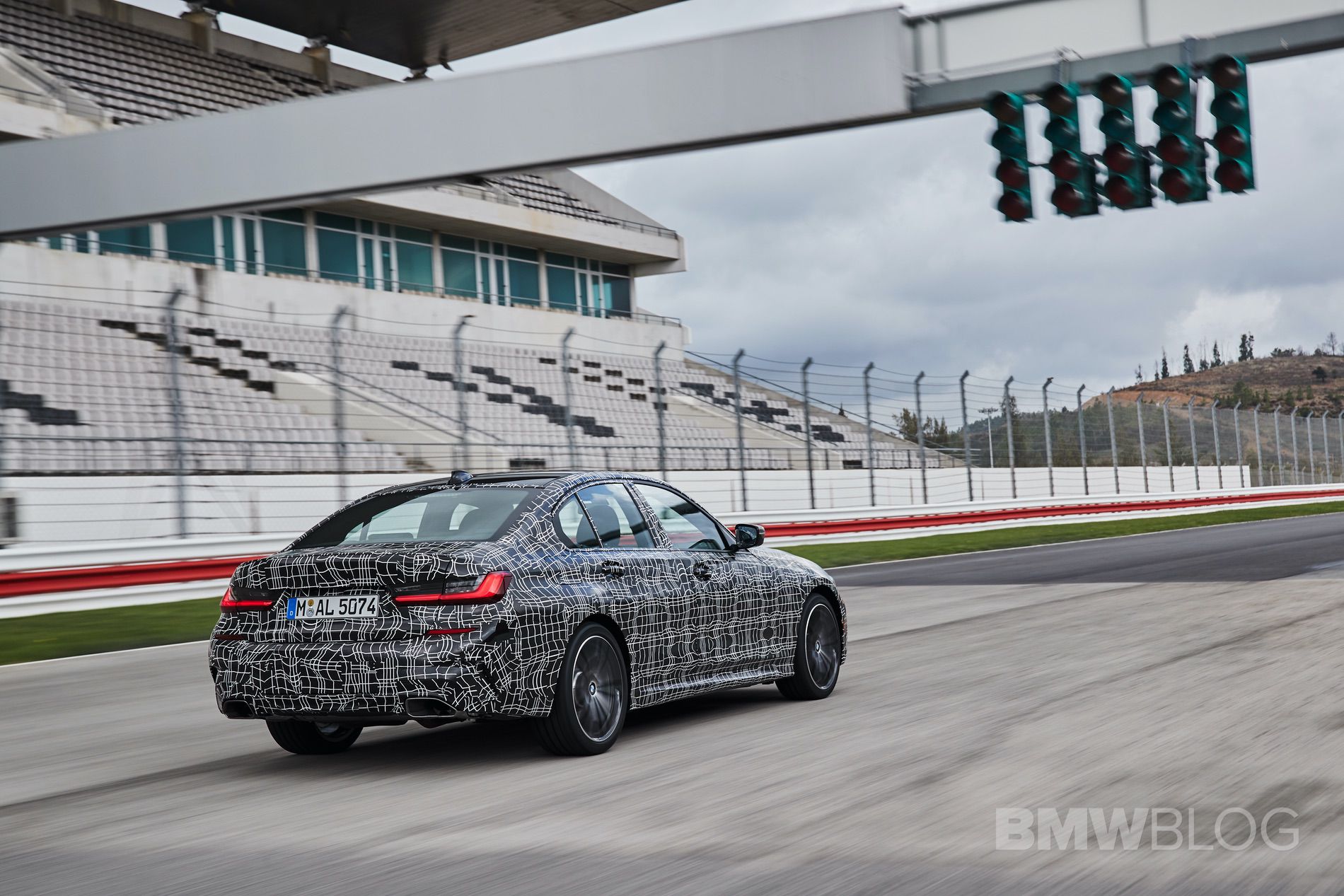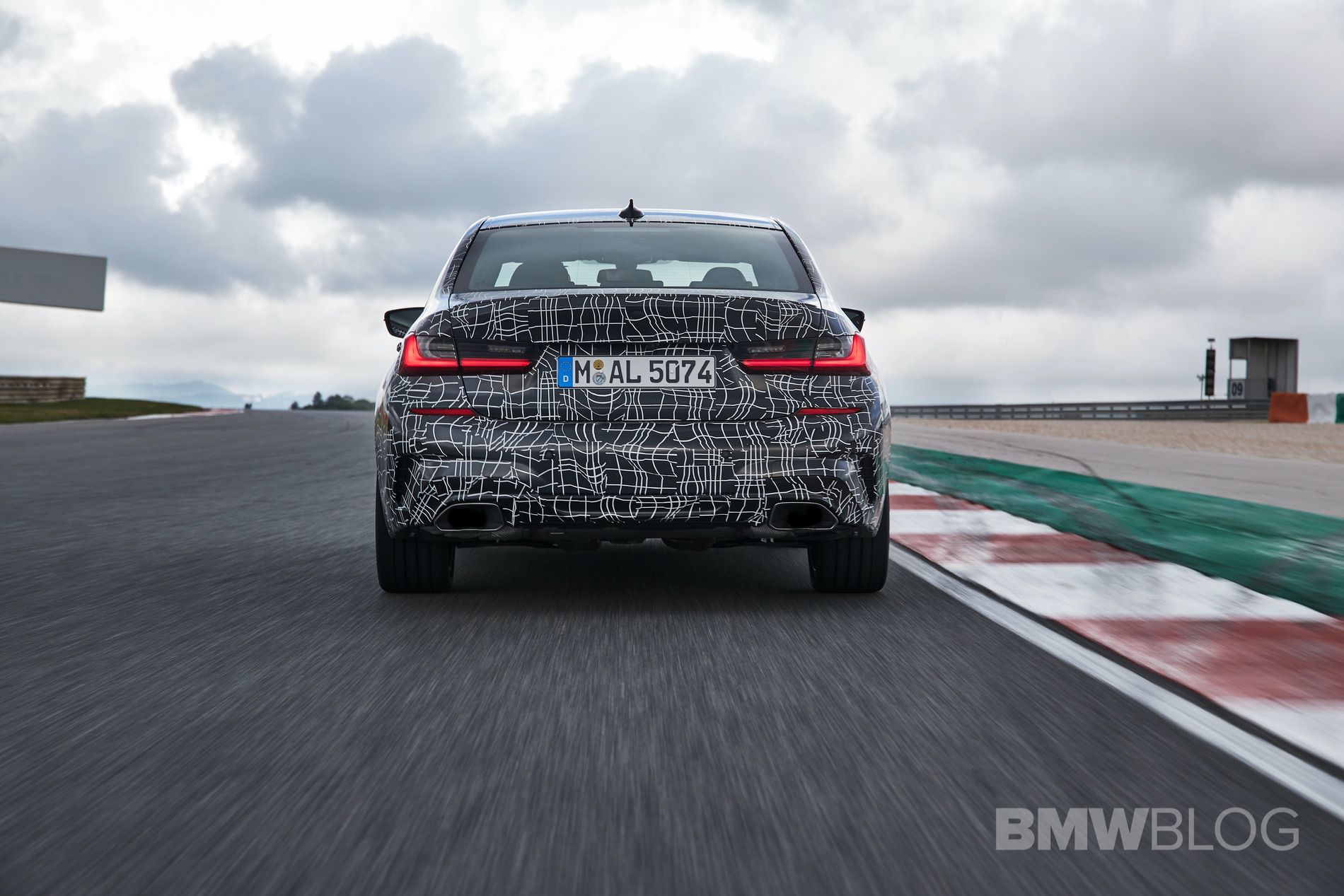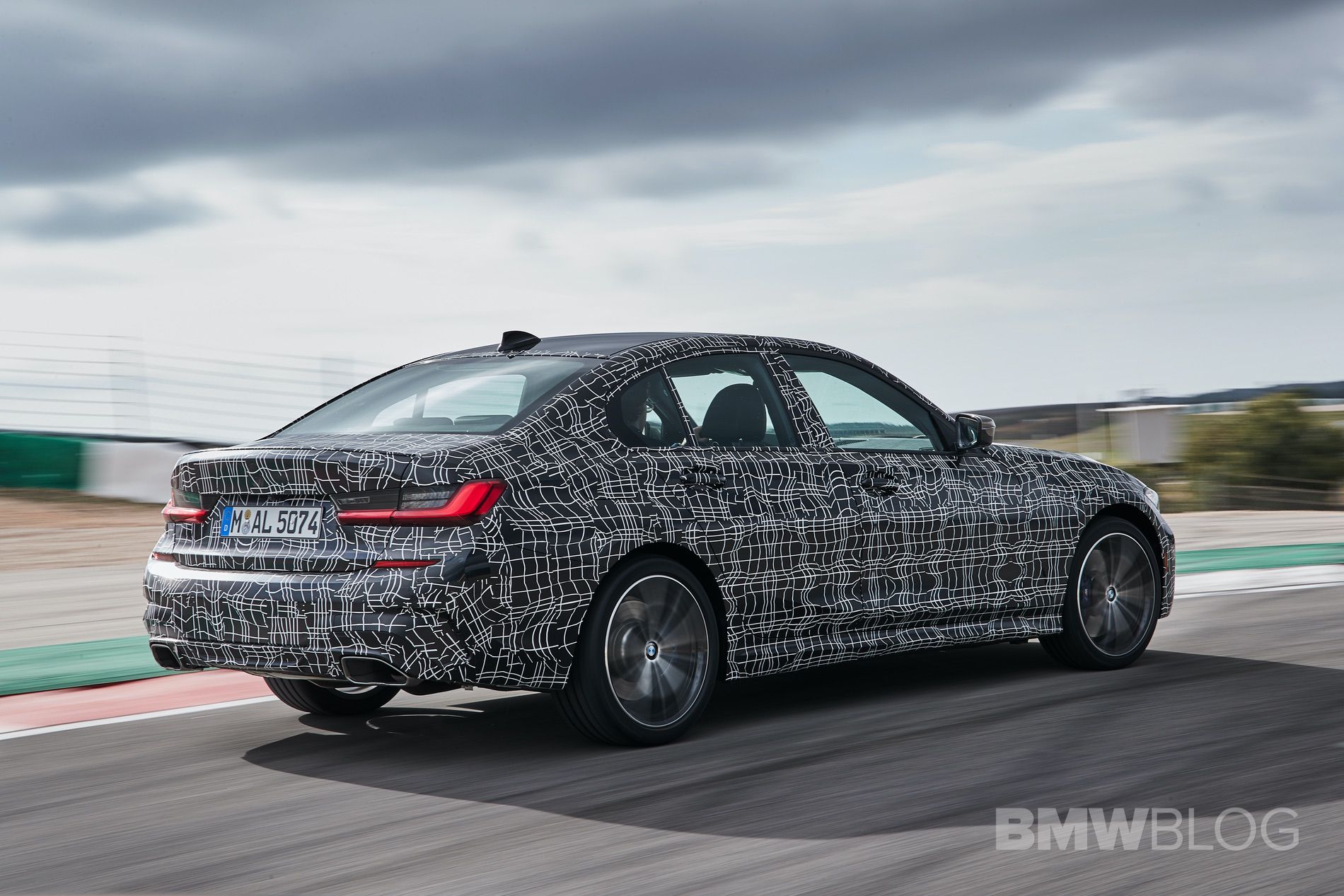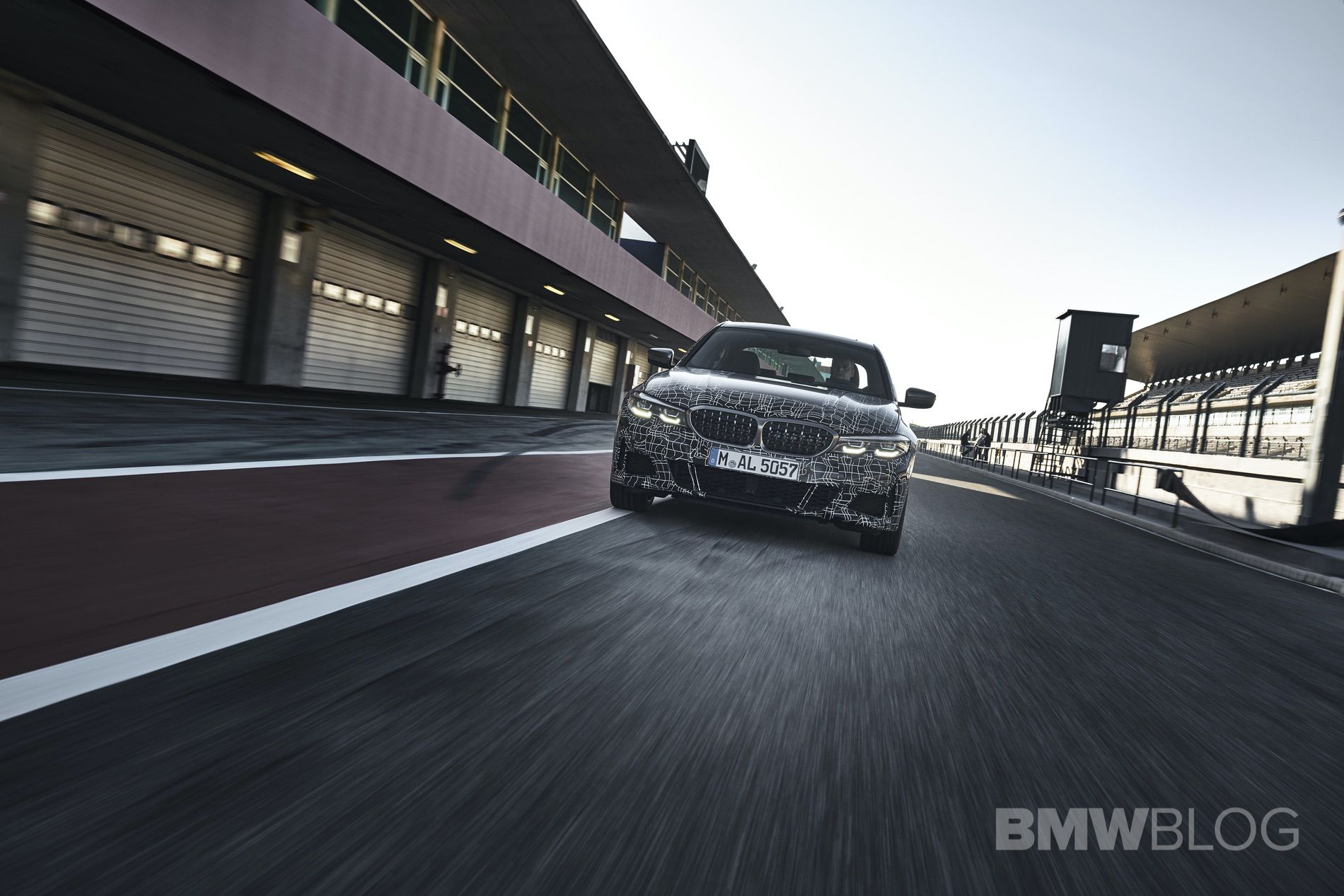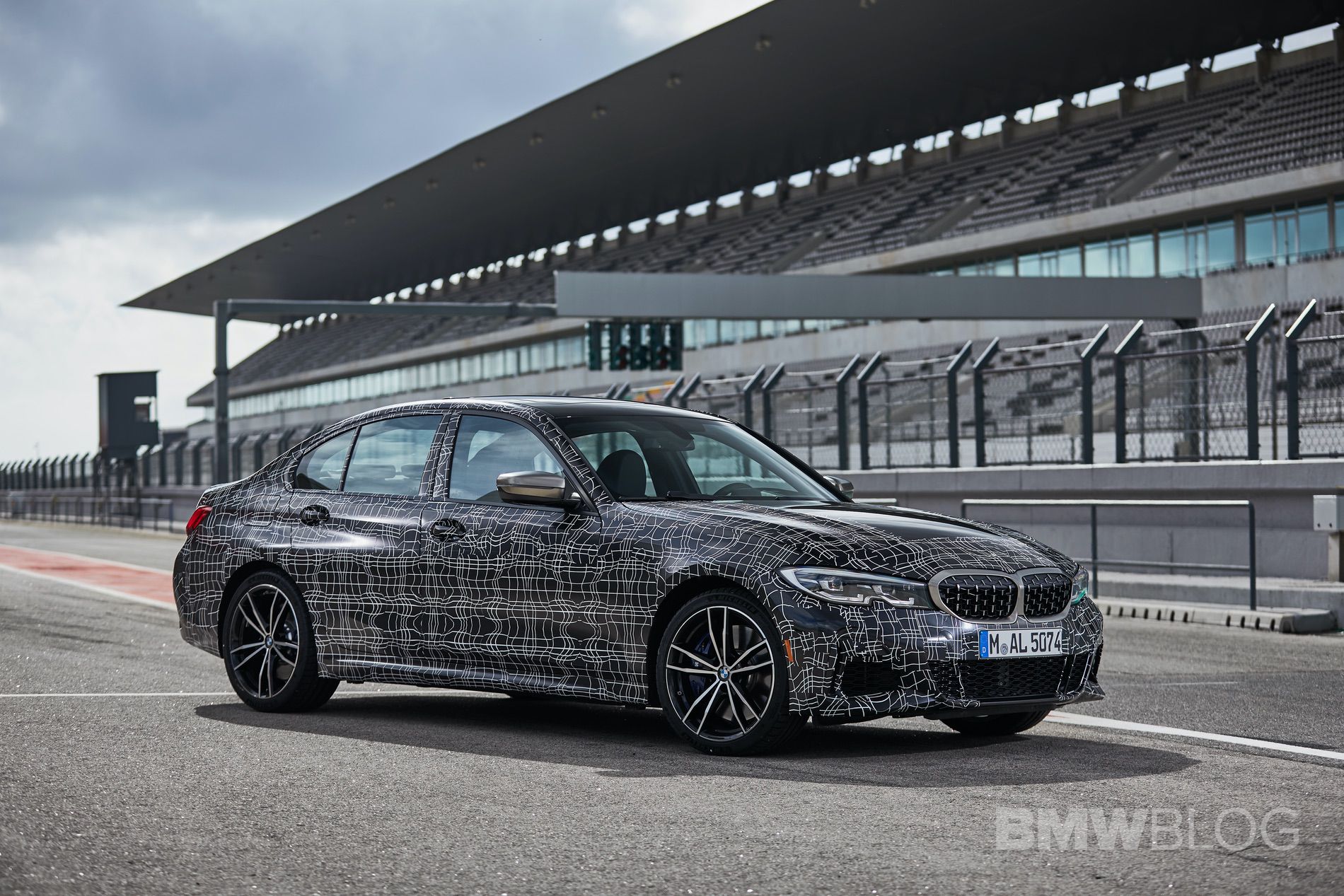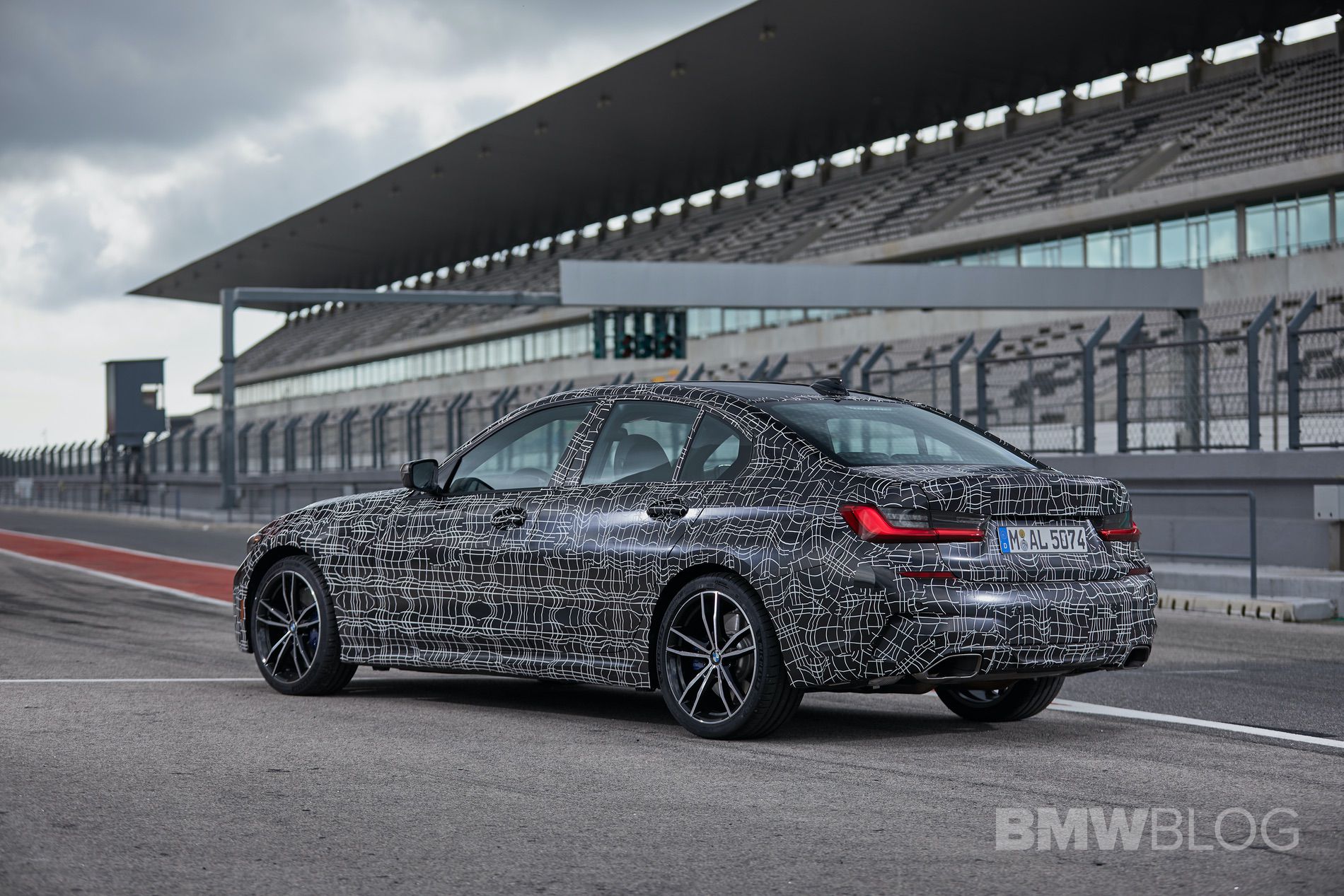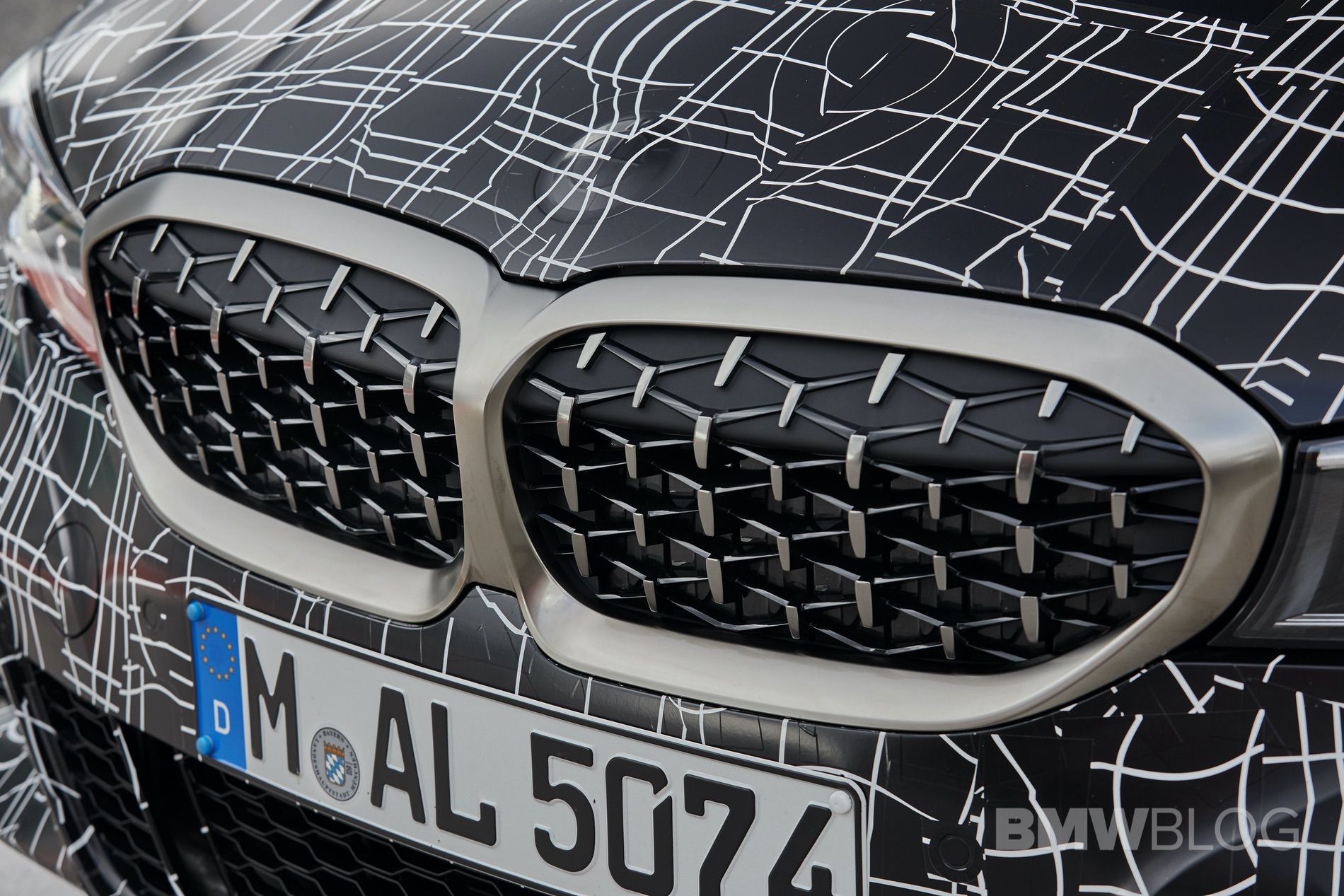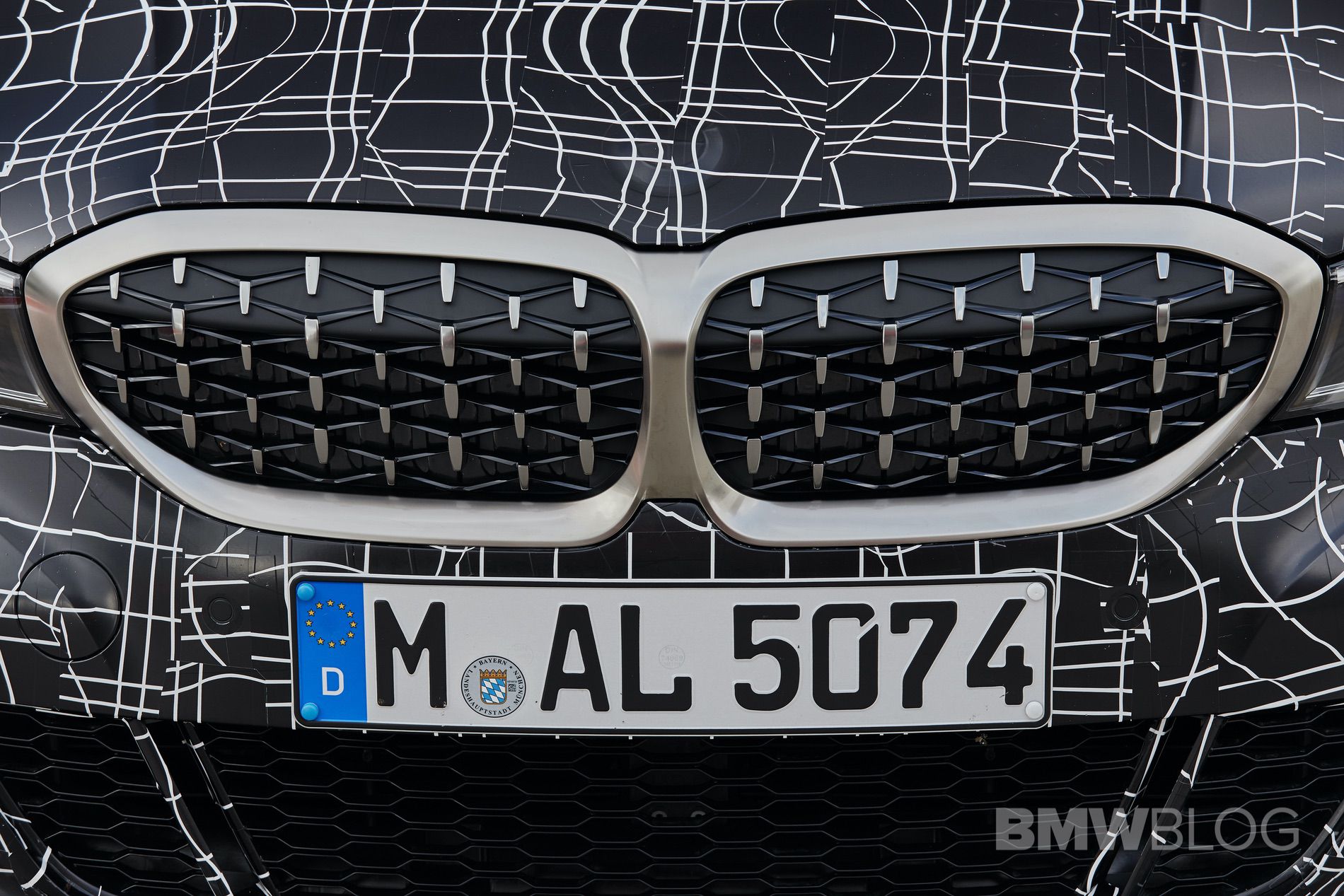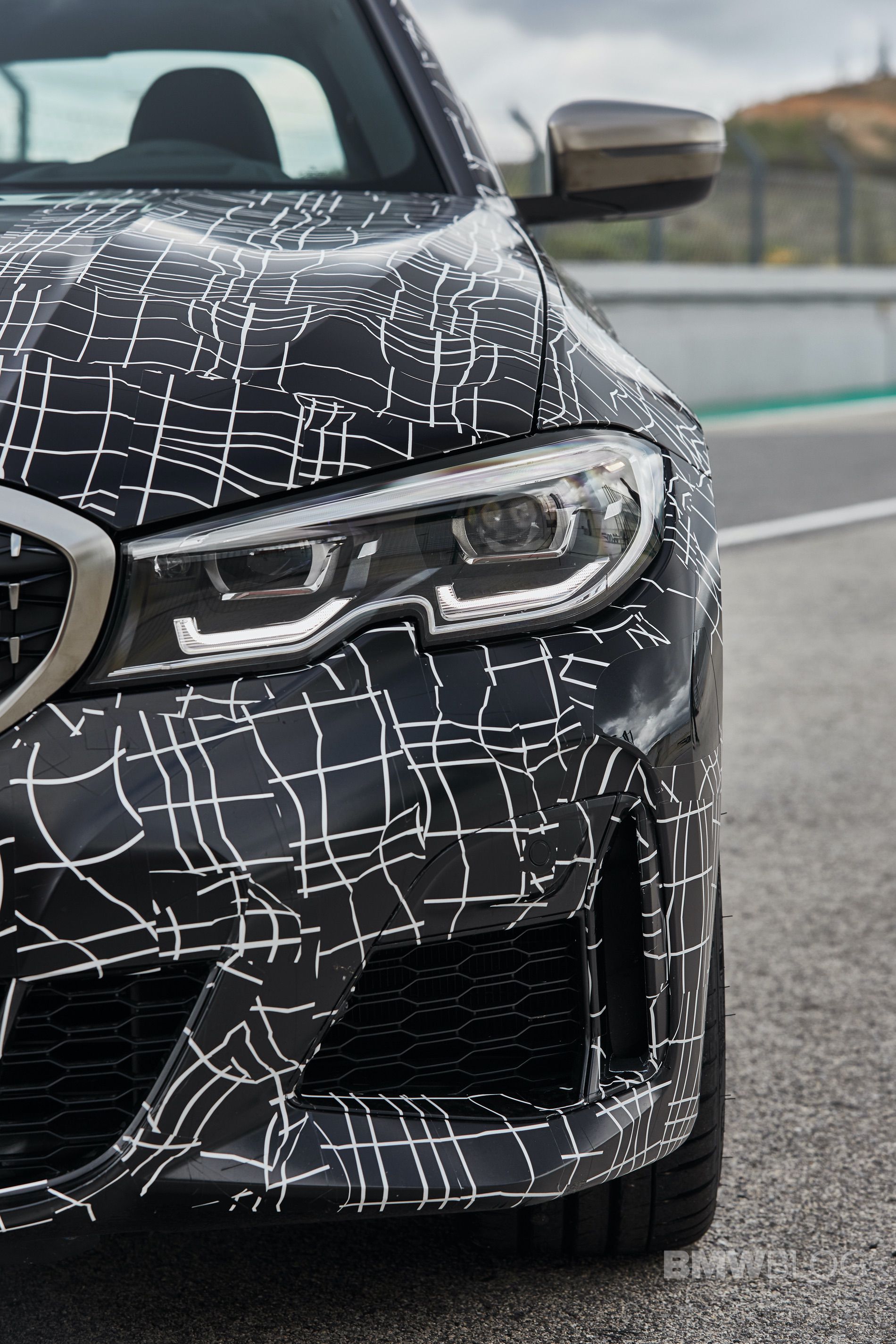Building on the great foundations of the outgoing F30 model and over 40 years of engineering excellence in a competitive segment, the seventh-generation is finally here and I just had the chance to sample it in Portugal. While my road test drive involved the US-bound 330i and the European 320d model, the track portion of the program was far more exciting.
Cue in the 2019 BMW M340i xDrive, the company’s first M Performance Automobile within the 3 Series family, and the first true competitor to the Audi S5 and Mercedes-Benz C43 Sedan. I had the chance to track a pre-production, camouflaged M340i prototype on the technical and challenging Autodromo Portimão track in Algarve, Portugal. But before I was handed the keys to the car, BMW engineers hosted me in a couple of workshops to go over some of the most important changes and engineering achievements in the new 3 Series.
Just like most recent BMWs, the new 3 Series has grown in size. It’s 2.9 inches longer than the F30 generation, 0.5 inches taller and 0.6 inches wider, with a wheelbase 1.6-inch-longer than the F30. That puts the 3 Series at the same levels as some older generations 5 and 7 Series.
So with the increase in size, the M340i had to be put through a weight loss program. In certain configurations, according to BMW, the M340i can be around 100 pounds lighter than the comparable F30 340i. Most of the weight savings were achieved through new aluminum parts in the hood, front fenders, and engine subframe.
Balance was also key, so BMW gave the 3 Series a perfect 50/50 weight distribution and a center of gravity 10mm lower than the outgoing car. Yet, more work had to be done to deliver on the promise of the “Ultimate Driving Machine”, a slogan often associated with the 3 Series.
According to BMW engineers, everything that the driver can feel in the new M340i, starting from the wheel, through the wheel carrier, through the suspension, through the steering column, has been enhanced through chassis stiffness and through the use of computer simulation and optimization. The overall G20 chassis is 25 percent stiffer, but in certain places, like the shock mount and where the axle is mounted to the subframe, it is up t0 50 percent stiffer.
The direct result of that is an increase in steering sharpness, response and agility, as well as better handling at higher speeds.
We also have to mention the new lift-related dampers which adds extra hydraulic damping at the front axle and a compression limiting system at the rear. According to BMW, it is continuously variable and adjusts the damper firmness progressively according to the changing spring travel. This prevents excessive body dive when driving over large bumps and so avoids uncomfortable, nervous damping response. The M340i models come fitted with the M Sport suspension as standard. If you want to, you can get the optional Adaptive M suspension which combines the M Sport suspension with electronically controlled dampers. Our pre-production prototype was equipped with the adaptive variant.
The steering is another big part of the improvements made to the new G20 BMW 3 Series. BMW’s variable steering was much-maligned in previous 3 Series generations, especially the F30-gen car. Most enthusiasts found it to be odd, with too much of a dead spot on center and then really big reactions once you turned past the change-point. It felt sloppy and seldom predictable.
Now, BMW has revised the variable steering in two important ways. The first is that the new steering rack is sharper on center, with less of a dead spot and more precision. The second is that the teeth spacing on the rack in the steering changes more gradually. Now as you turn the wheel, and the pinion gear turns on the rack, the teeth spacing changes as you turn past a certain point, and the steering ratio becomes faster.
And since a proper BMW track car almost always needs a limited slip differential, BMW has included one in the M340i. The electronically-controlled locking rear differential acts like a mechanical LSD transferring the torque from one axle to the other.
The final ingredient to the M340i is its heart. As you probably already know, they are powered by a new iteration of the B58 engine, with two different power outputs, depending on the market. European customers will get their models with an Otto particulate filter installed, which means their cars will develop 374 HP and 500 Nm (369 lb-ft) of torque. US-bound models get a bit more power, rated at 382 HP and the same amount of torque.
Now it’s finally time to head to the track. The Portimao circuit resembles old Nürburgring and Spa-Francorchamps, mainly because of its considerable elevations changes and plenty of blind corners which can get you in trouble really quick. In front of me, as always, I have a professional BMW driver, this time around, none other than DTM Champion Marco Wittmann.
First lap, it’s all about getting to know the track, learning the racing line and braking points, and mostly making sure you don’t screw up. The reconnaissance lap gives me time to accommodate with the new M340i, in the xDrive guise. I was just coming from a road test with the 330i M Sport Package (Youtube video), so I had some base knowledge of what to expect from the more powerful M340i on the track.
Immediately the M340i xDrive feels different than its four-cylinder brother – there is way more pull when you floor the pedal, as expected, and the xDrive system works wonderfully keeping you on the track even when coming in hot. The next lap brings some higher speeds, so I do my best to follow Wittmann and learn from his racing line to make sure I get the best out of this new M340i.
One thing that stands out at high-speeds is how well the BMW M Differential alongside xDrive manages power distribution to all off the four wheels. The drive is effortless, yet engaging, with enough rear slip to keep you happy without getting in trouble. Coming up the hill, the engine pulls hard, thanks to its massive torque at low rpms, and its wonderful match with the revised 8-Speed transmission. Downshift at the top of the hill, gently apply the M Performance Brakes, and now the car is ready for this right-hand tight corner, easing through it and maintaining its composure throughout it.
The steering is just as the engineers described it – sharp, very agile and easy to maneuver. There is also significant more road feedback through the steering than I experienced in the last F30 340i – and being less muted – so that should please many of the BMW purists. Without going back-to-back on the track with the F80 M3, I can’t really make a scientific test between the two, but in my opinion, it’s not far from its more potent and full-fledged M brother.
As the lap count increases, so does the speed. So now I get to see the chassis and suspension full at work. The M Adaptive suspension delivers damping force to corner, thanks to continuously adjustable valving, and BMW describes it as being both comfortable on the road and sporty on the track.
The idea behind the M Adaptive Suspension is to help with handling on curvy roads, with increased body control at high speeds and quick turn-ins. It’s fairly rigid, but not as rigid as the M Sport which I’ve experienced in the 330i. It’s also less bouncy and balanced well for the regular customer.
There is not a lot of body roll and the added grip from the xDrive system and the Michelin PS4S tires is always welcome, especially when traveling at high speeds. It’s also refreshing to see that BMW will still offer a rear-wheel drive M340i, for those that would like to shed some weight and have a bit more fun, so I look forward to some track time with that version as well.
In straight line, the B58 3.0 liter TwinTurbo show its prowess. It’s extremely easy to quickly get to top speeds and the 4.0 seconds standard sprint seems easily achievable. Shifting is even smoother and faster than the previous ZF transmission, mostly because of the shorter first and second gears. The power delivery is also more linear, which makes for a more pleasant shifting experience, and longer gears at highway speeds.
Launch Control and Spring With BMW DTM Champion Marco Wittmann
As for what’s keeping all this power in check, the M Sport brakes that come as standard on the M340i and M340i xDrive should be good enough. The front brake disks measure 348 mm / 13.7 inches with four-piston fixed calipers while the rear brake disks measure 345 mm / 13.6 inches in diameter with single-piston floating calipers. It took less than a couple of laps to get them to the proper temperature, but after that, you get enough bite to keep the speed in check.
The engine sound is always a big deal with to sporty BMW customer, so I’m happy to say that it offers those nice blurbs we got to love from other M Performance Automobiles, like the X3 M40i. Thanks to the dual-mode exhaust system, in Sport and Sport+ modes, which can be activated via the Driving Experience Control switch, the valve-controlled exhaust system opens up its valves to enhance the sound. A first for a 3 Series product.
Unfortunately the road test was not part of this program, so I’m not able to see how the M340i xDrive handles itself during “regular driving”, but future tests will take care of that angle as well.
Overall, the M340i xDrive is on another level when compared to the outgoing 340i. It is much closer to a full M product than to a standard 3 Series, finally filling that gap. The steering feedback will be sufficient for most drivers, the suspension options will also appease many different type of customers, and the engine is superb. The technology and the long list of options and standard features is also quite impressive, with a little bit of everything for everyone, which really shows how diverse the 3 Series customer base is.
In the US, the BMW M340i XDrive will arrive in Summer 2019 with a base price of $56,995 which is fairly close to its competitors. The Audi S5 has an MSRP of $52,400 while the Mercedes-Benz C43 Sedan kicks off its sales at $53,400. The rear wheel drive M340i starts at $54,000 + $995.
There is not much gap in between the M340i xDrive and the current F80 M3 ($66,500), but there should be a larger performance gap between this new M Performance Automobile and the upcoming G80 M3, so the choice might be clearer then.


